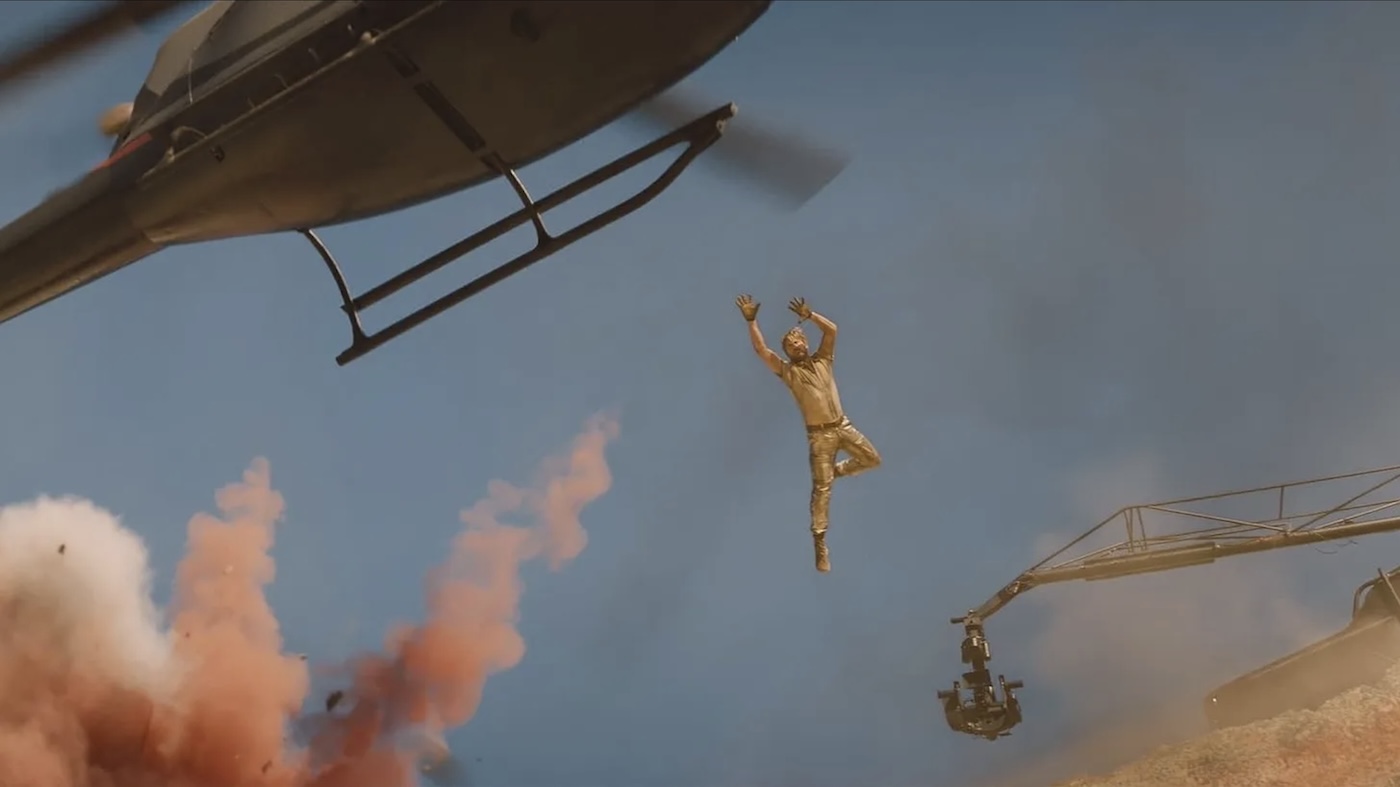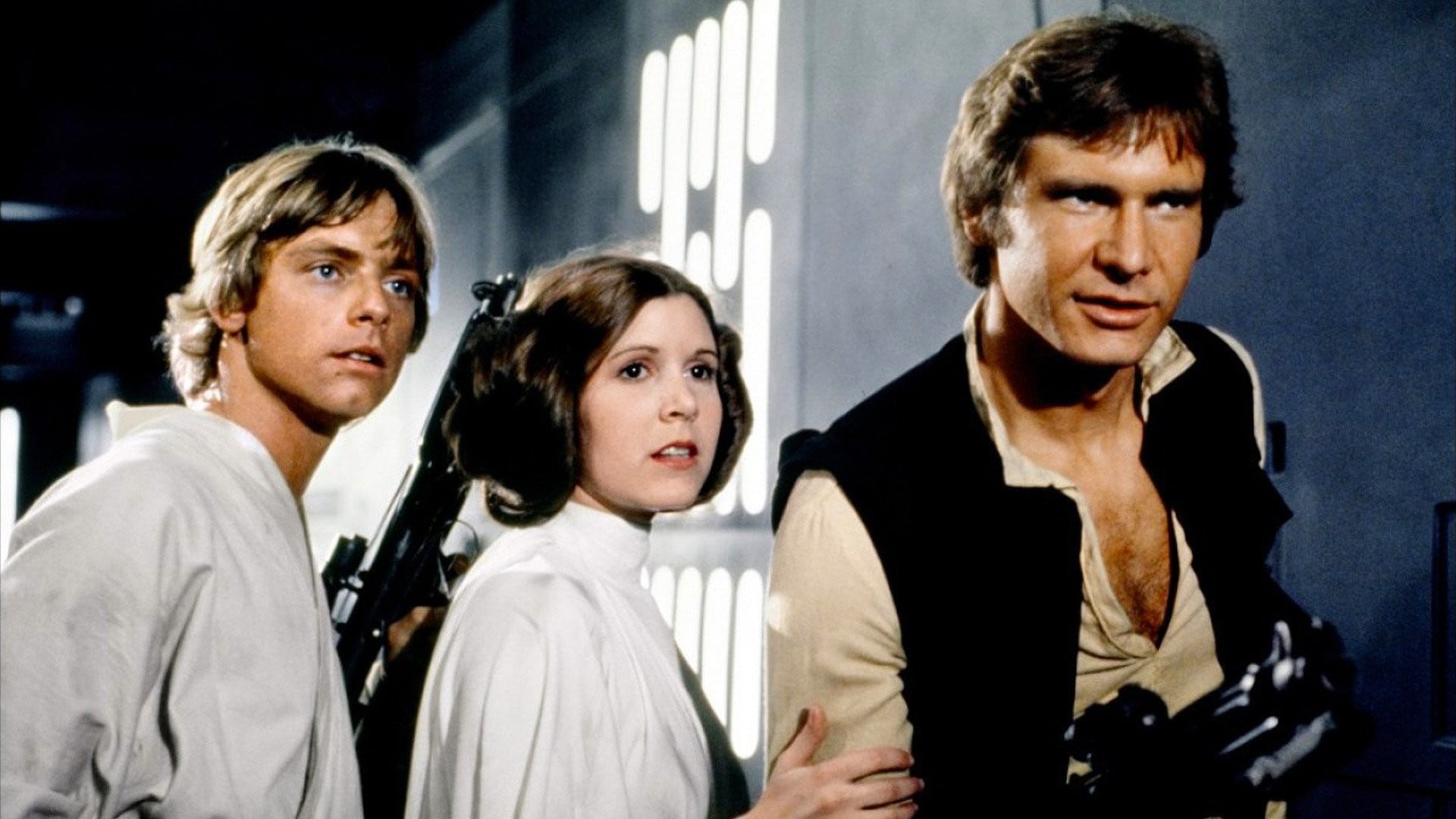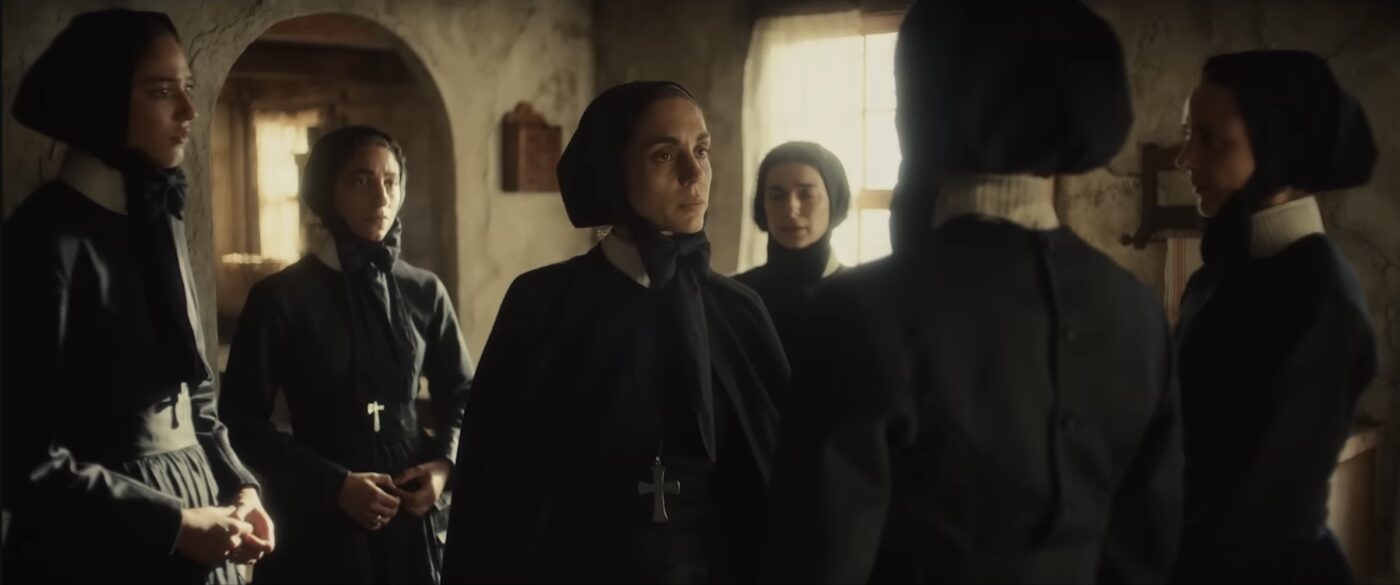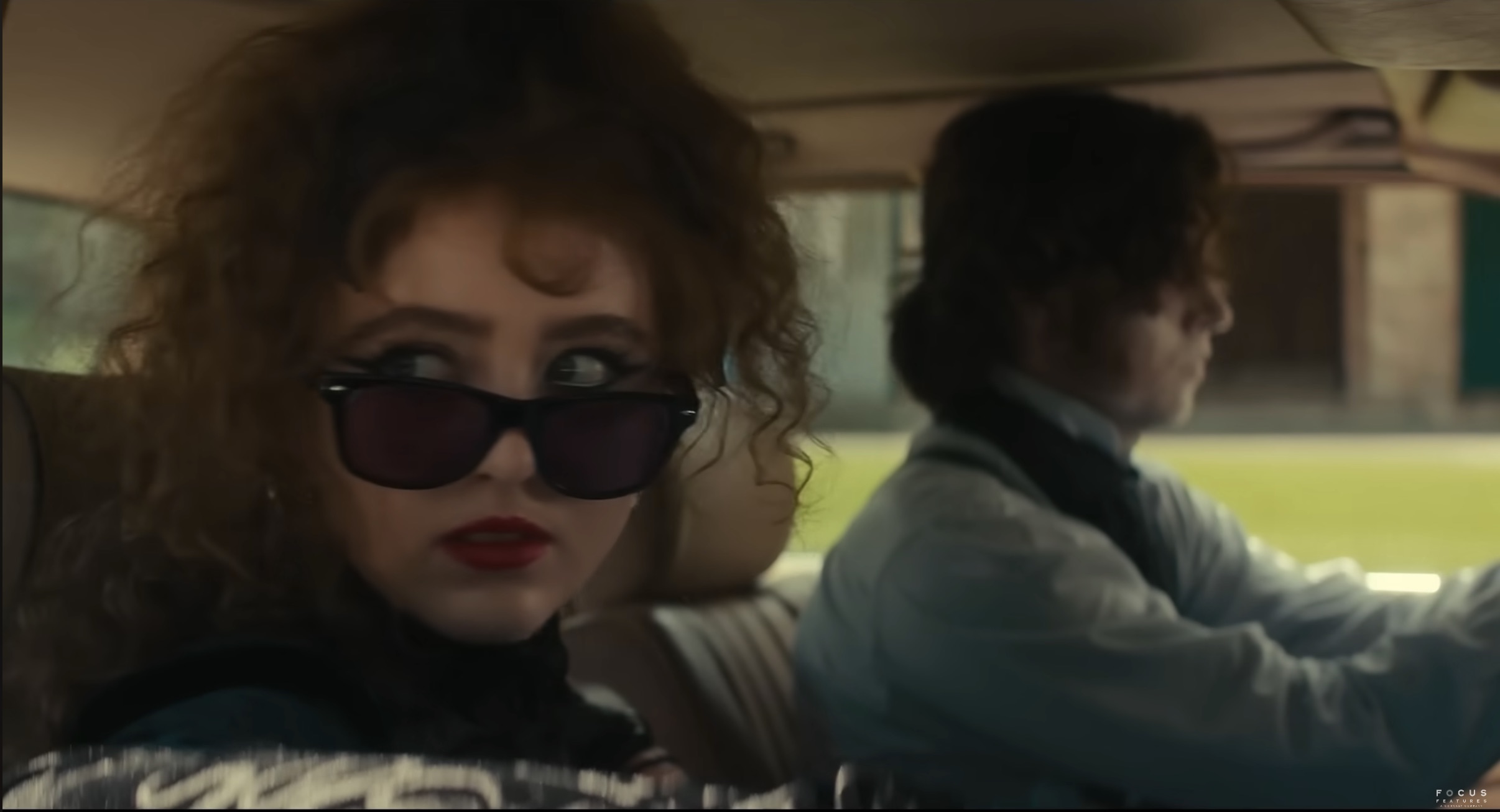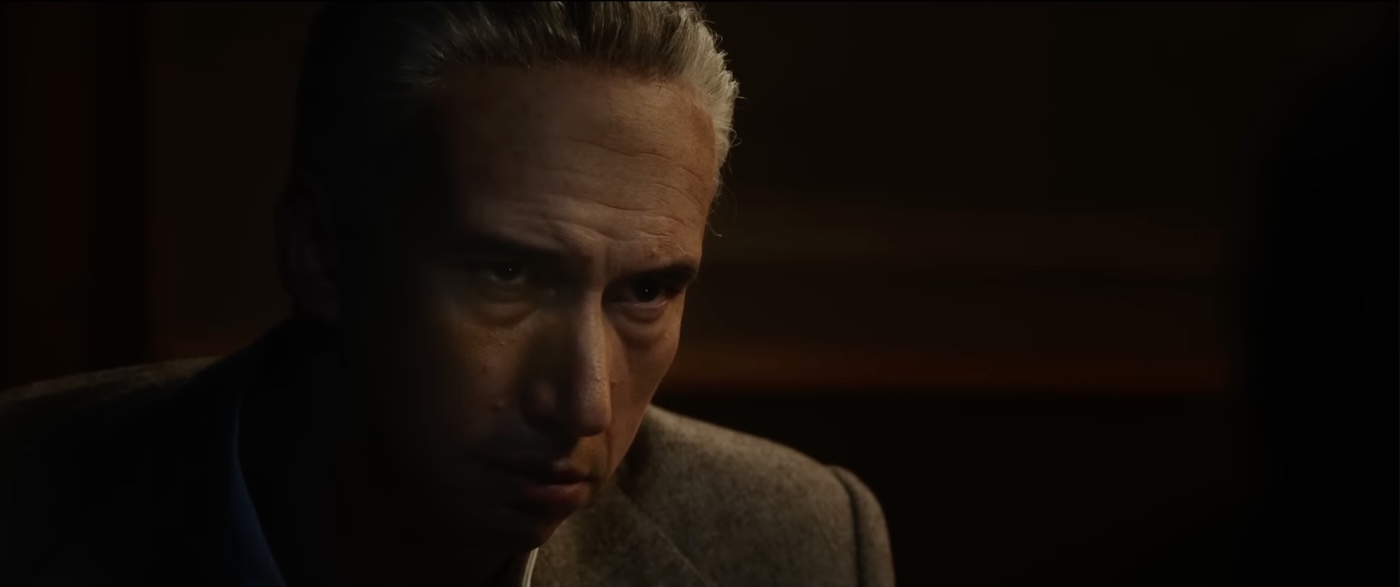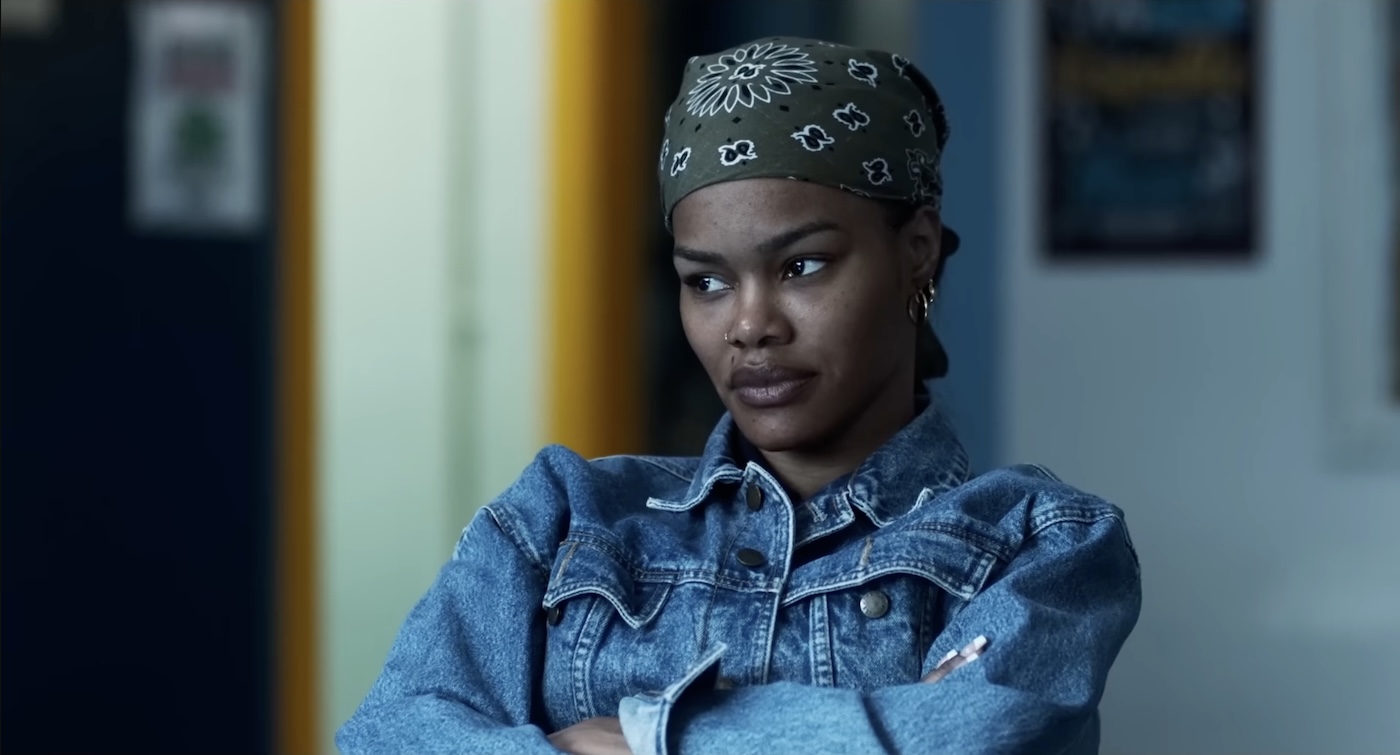Unworthy of Gosling or Blunt, Fall Guy's screenplay falls short of my summer movie standards
An early draft of this post was originally published on May 11, 2024,
at Give Me Some Light on Substack, months before it appeared here.
Subscribe, and you'll read many of these posts and reviews while the films are still breaking news!
Here are the Top Ten Possible Letterboxd Reviews for The Fall Guy that I drafted while waiting for the new David Leitch movie to end….
#10
Me, during Ryan Gosling's opening narration: Every word of this is unnecessary and making the movie worse.
Me, during every line the writers give him for the rest of the film: Every word of this is unnecessary and making the movie worse.
#9.
Only Donald Trump gives himself a smugly self-aggrandizing thumbs-up on camera as often as this movie gives itself one. Roger Ebert would not be amused.
#8.
I can shrug off a bad movie, but I won't forgive them for spoiling “Without a Trace” — one of the best movie-based hits of the '80s — by setting it to what I'll probably remember as the worst scene of the year. Justice for Phil Collins.
#7.
You know something's gone terribly wrong when a character references Love Actually and you spend the next 15 minutes wishing you were watching that instead.
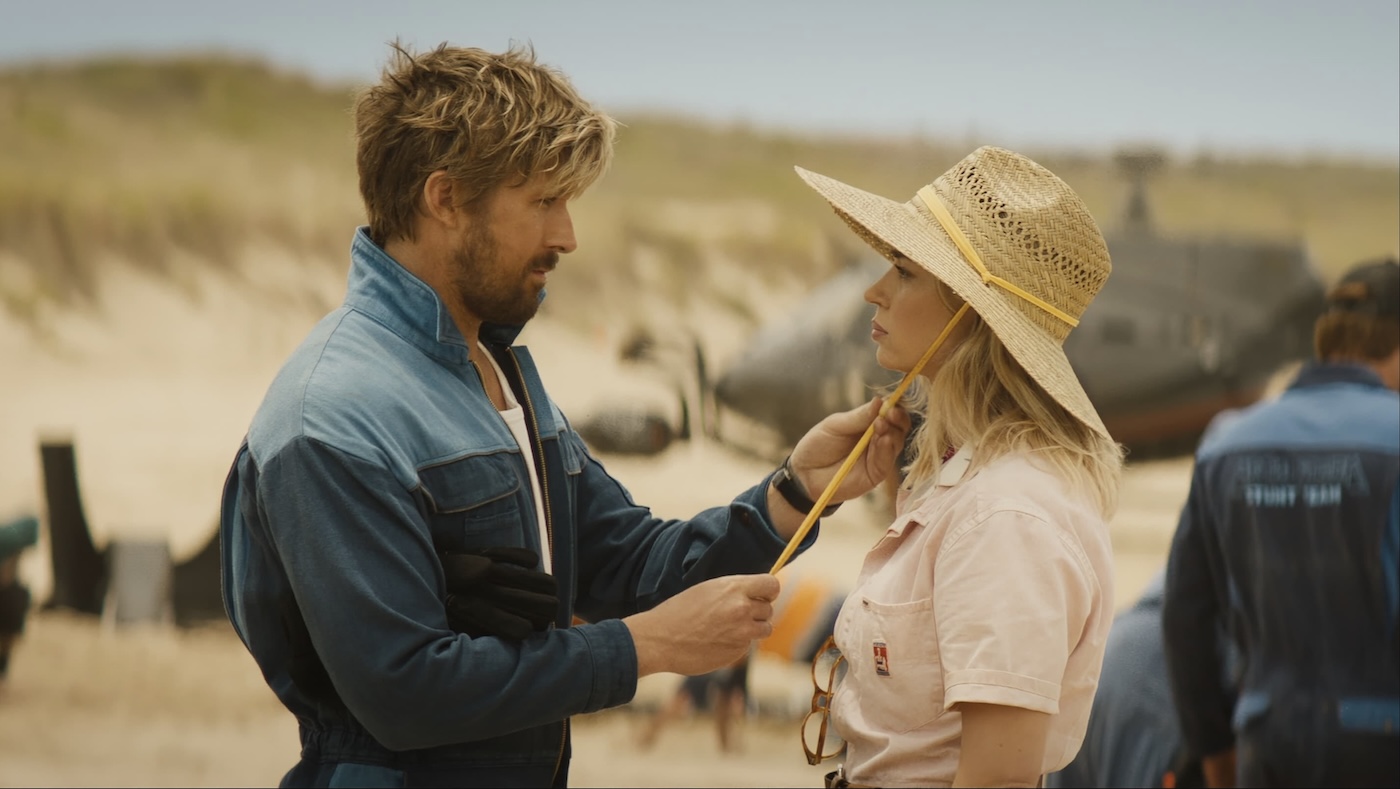
#6.
Michael Mann's Miami Vice made me want a mojito. The Fall Guy has cursed the spicy margarita. And that was my favorite drink. That may be the real reason I'm gonna go ahead and dock this an extra half-star.
#5.
Aaron Taylor-Johnson, killing it with a mercilessly cartoonish Matthew McConaughey send-up, actually pulled me out of a very deep funk for a few minutes as we rounded what I thought was the final turn.
But then there were more turns.
So many more turns.
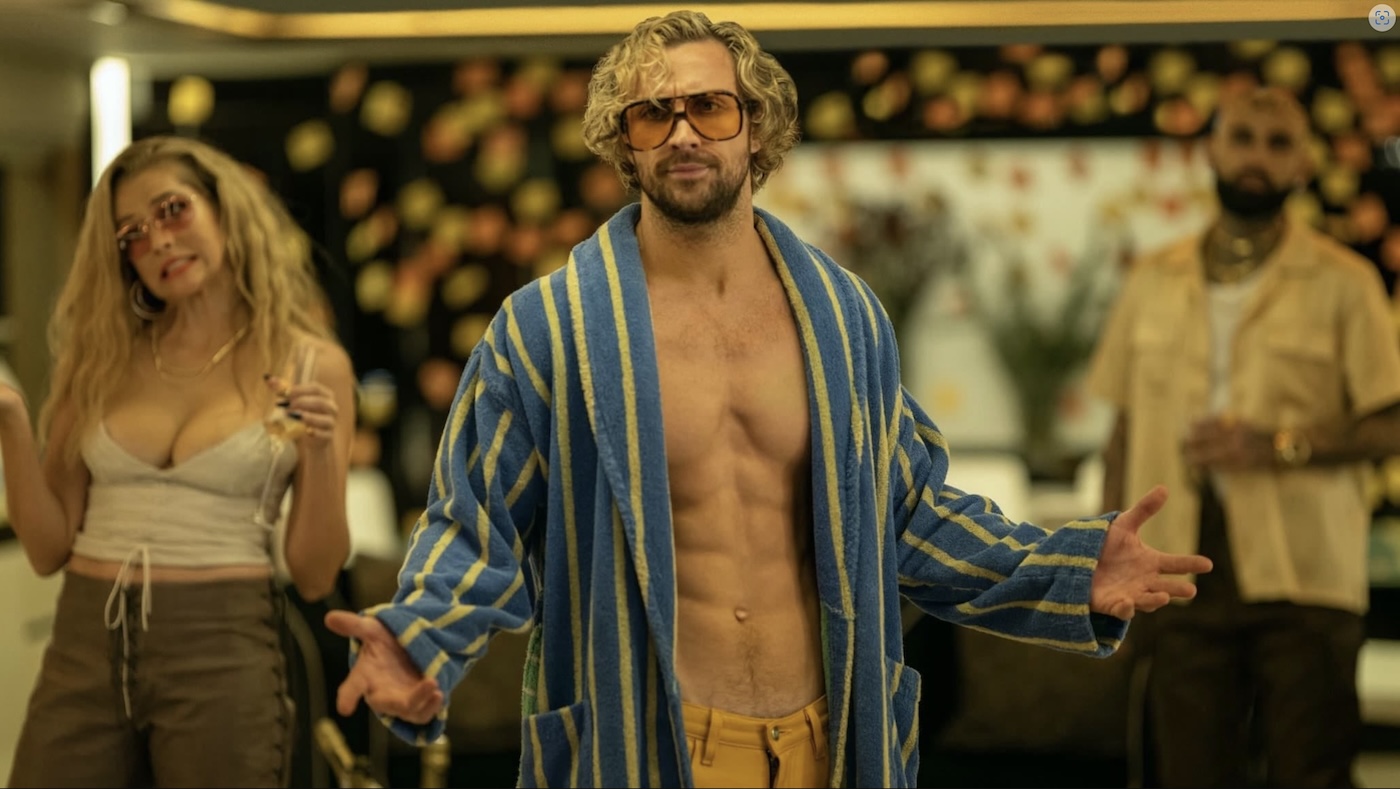
#4.
I think the moment the ground fell out from under me came early, when Gosling gets into an SUV, turns on the radio, hears a Taylor Swift song in progress, and cranks it up for pathos. Maximum pandering. Should've played it as a jump scare instead. (Oh well... this “hero’s” wannabe catchphrase is “Let's make bad decisions.”)
#3.
I could have walked into the theater next door and seen Challengers a second time.
Let me say that again: I could have walked into the theater next door and seen Challengers a second time!
#2.
“Here are the Top Ten Letterboxd Reviews for The Fall Guy that I drafted while waiting for this movie to end....”

#1.
Everyone and everything involved just jumped the shark.
After I published that Top Ten List on Letterboxd...
I lay awake late into the night, severely aggravated not only by the movie, but by my discovery that a lot of critics who should know better are excusing this movie’s many mediocrities and flat-out absurdities, calling it “fun” and “exactly what we need right now.” That amounts to a dereliction of duty.
So, here are several more notes I could add to the previous list:
#11.
Hannah Waddingham's magic in Ted Lasso was in her restraint. This performance is so over-the-top that I think I need to avoid things she's in now for a long, long time.
#12.
In this movie, characters describe blockbuster action movies as nothing more than medicine wrapped in "sexy bacon" — you know, like when you wrap a pill in meat to make a dog take his medicine.
Jeez.
What a demeaning perspective for any “artist” to have on their work. And we're supposed to root for these “filmmakers”? If that's all you require of our action blockbusters, well... you can have them, little doggies. I'm out. I remember summer action movies that were so much better than this.
#13.
Who cares about, or can suspend any disbelief at all for, or even bother tracking this inane narrative?
#14.
Who thinks that these "characters" are actually characters? So, a stuntman and a cinematographer had a lovey-dovey fling, and then he got injured and they didn't hook up for another year, and she resents this, and this — this — is the tragedy, the crisis at the heart of the picture? This is what we're hoping to see resolved?
#15.
Come to think of it, don't bother preaching to us about love either, when you haven't given us any evidence that love ever had anything to do with it.
#16.
If you're going to throw in an allusion to another film or show, make it count. Don't just smirk and be like "Remember Notting Hill?" Get your Last of the Mohicans references out of your mouth, Fall Guy. This movie isn't worthy to kiss Daniel Day-Lewis's boot.
#17.
What is Stephanie Hsu doing here when she deserves so much better? If this is the kind of role that an Oscar nomination will get you, what's the point?
#18.
I'm hearing a lot about how it's a loving tribute to the art of stuntmen. The thing is, the Mission: Impossible, Mad Max, and Bourne movies — and the Daniel Craig Bond movies too — make me admire and respect stuntmen far more than this because at least those movies have the decency to celebrate and honor them with real screenplays, real cinematography, real creativity, real storytelling, real stakes — aspects that are glaringly absent here. And the action in those movies makes so much more imaginative sense. There is a scene here in which a character is being doused with gasoline — gasoline everywhere! Then, someone lights a match. And somehow, the scene ends with fire only erupting in the places that will allow our hero to escape unharmed. Why didn't anything else catch fire? I couldn't even laugh at the absurdity of it — I was already feeling resentful.
#19.
I'm also hearing a lot of people say “It's fun!” Their ideas of fun are very different than mine. I thought Gosling's Saturday Night Live opening monologue promoting this movie was ten times more fun than the movie itself.
#20.
I've been a fan of summer comedies since high school. But I hold to the apparently unreasonable standard that the jokes suggest they were written. By funny writers. So that they might be lines I find myself repeating and laughing about later. There's nothing in this movie worth repeating.
#21.
Mark this as the film in which Gosling's particular personality became too large for any costume, and now all we will see is the Ryan Gosling-ness of him. I hope I'm wrong. I really liked him when he was more of an actor than an idol.
#22.
I guess I'm relieved that a movie by one of the Coen brothers is no longer the most stunningly frustrating movie I've seen so far this year.
Love triangle aside — what is Challengers really about?
An early draft of this review was originally published on May 4, 2024,
at Give Me Some Light on Substack, months before it appeared here.
Subscribe, and you'll read many of these reviews while the films are still breaking news!
If you’ve seen the trailer or read reviews for the new film from director Luca Guadagnino (Call Me By Your Name) and rookie screenwriter Justin Kuritzkes (husband to director Celine Song who made Past Lives), you know the premise:
Challengers is, on its surface, a twisted saga of two competitive tennis players, Patrick Zweig (La Chimera's Josh O'Connell) and Art Donaldson (West Side Story's Mike Faist). When we meet them, their relationship is a complicated mix of camaraderie, competition, and homoeroticism. But that volatile chemistry becomes unstable when they get playfully combative, and eventually contentious, over another rising tennis star, Tashi Donaldson (Zendaya), a woman who enchants them both. And as Tashi works her magic, we begin to what she wants from playing them against each other, especially when her own career on the court comes to a crashing halt.
The intrigue of two men competing for the heart of the same woman has been popular template at the movies, so critics have plenty of possible precedents to consider for comparison. My personal favorite, an '80s comedy, inspires my suggestion for an alternate title here: Dirty Rotten Sweaty Cheating Power-Serving Scoundrels.

Since this movie's been inspiring lively conversations for months now, you probably don't need me to reiterate the usual talking points:
You don’t need a more detailed synopsis than I've offered here. Most of the joy of the movie comes from riding its narrative rollercoaster from one surprise to the next. (I suspect some of you will scratch this one off your list if I tell you that the scene that serves as the "hook" in the trailer — the one win which Tashi gets both men kissing her at the same time — takes a turn in which the kissing continues, but without Tashi. If that's not a dealbreaker for you, let me tell you, there a lot more movie to discover beyond that, and the part that interests me most — which has nothing to do with shared bodily fluids — is still more than an hour away.)
You've probably already heard that Trent Reznor and Atticus Ross give the film a compelling electronic score that works wonders. I agree, even though I admire their work on The Social Network more.
And you don’t need me to tell you that Challengers is going catapult Zendaya to marquee-level movie-star status (if she wasn't there already). If I have anything specific to contribute to the conversation about her performance here, it's just that I think she strikes me here less as an Oscar-caliber actress and more as a reliably commercial star. And I think that's a bit of the problem for the movie, as both of her co-stars look ready to headline prestige pictures for decades to come. Faist and O'Connor—especially O'Connor—create much more complicated and interesting characters here, by my lights.
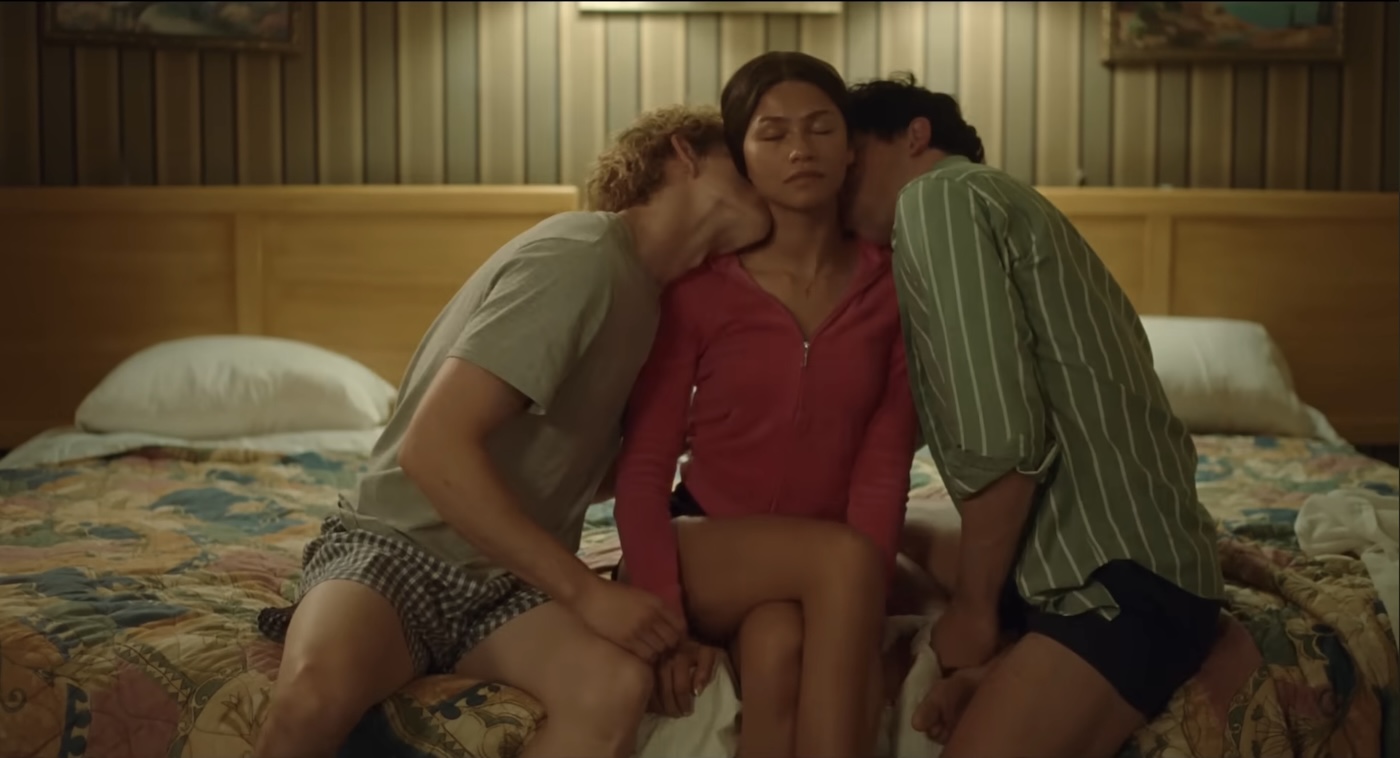
But what you probably haven't heard — and I'm amazed that so few of the movie's opening weekend critics bother to mention this — is that Josh O'Connor was doing incredible things on big screens in two feature films while Challengers was getting most of the attention. Check out the layered and thoughtful drama/comedy La Chimera, in which O'Connor plays a troubled tomb-raiding treasure hunter. (It's available on rental platforms now.) O'Connor is one of those rare, unconventionally engaging stars that makes his characters seem complex and ruggedly human, and he's on an unlikely Adam Driver-esque ascent right now. He's going to be everywhere soon, and deservedly so. (He's already been cast in the third Knives Out murder mystery.) I won't be surprised if he and Faist both earn Oscar nominations for their work here.What I find most interesting is how Challengers fits in the weird Amadeus and River Runs Through It genre of movies that ask “Why Is It That Those Who Behave in Self-Destructive and Relationally Self-Sabotaging Ways are the Ones Who Achieve Transcendence in Art?”And that has a lot to do with how I interpret the last ten climactic seconds, which made me laugh out loud in surprise and delight.
I had already come to the conclusion that Guadagnino and Kuritzkes couldn't possibly find a satisfying conclusion for this saga of three-way abuse. But in revealing that this is ultimately about the drive to achieve transcendence in art rather than romance, they redeem the arc of appalling behavior. They’ve found the best possible way to end this very messy film.
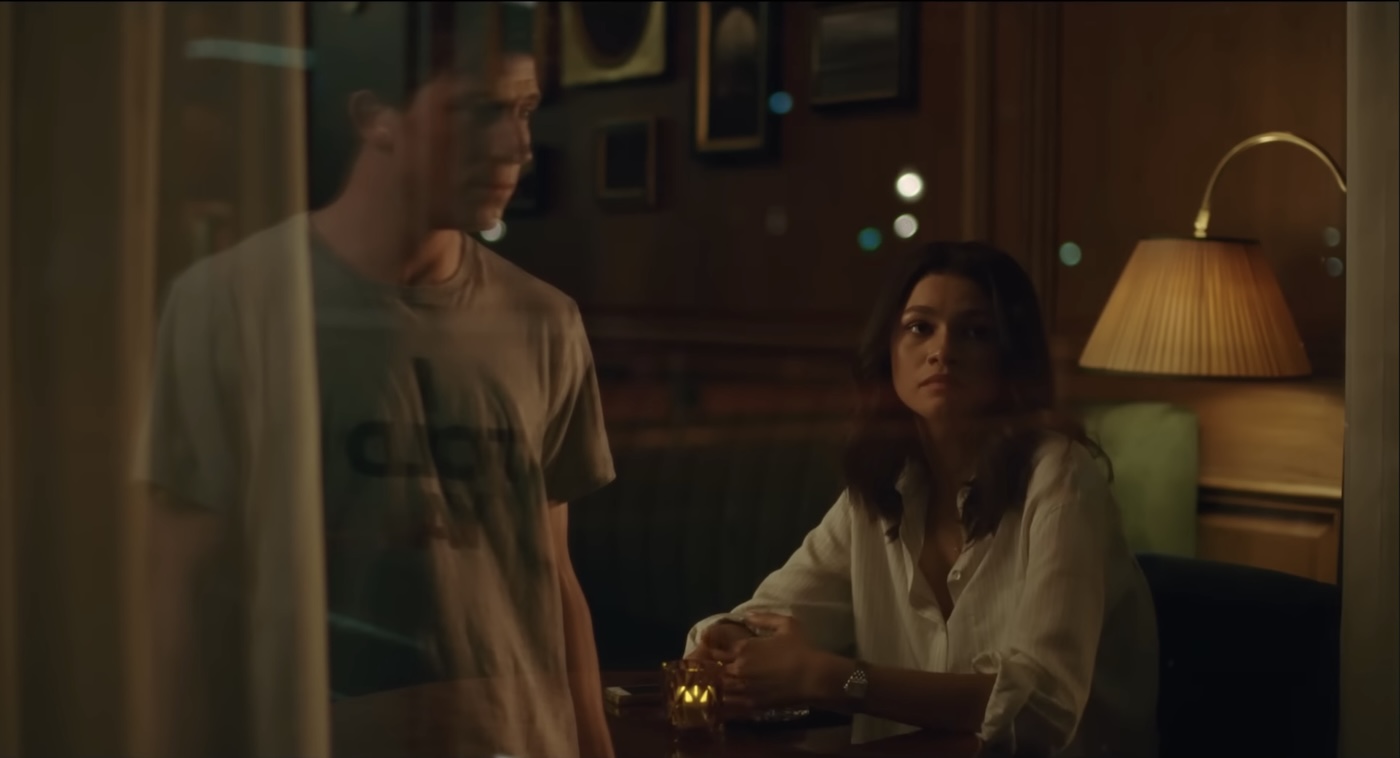
I promise not to spoil what happens at the film's climax (that word is, um, unusually appropriate here). But I will say that it's likely to frustrate a lot of viewers with its seeming lack of closure. And I'm going to stubbornly claim that the film’s furious conclusion is, in fact, perfect closure if you’re tracking what the movie is really about, what it values most.
Indulge me for a moment — I’m going to do something critics should probably never do. I’m going to mention… my college band.
There’s a reason for that. Bear with me.
We weren’t great. Only two of the four of us really knew how to play guitar or keys. I was fumbling around with my guitar, trying to find anything that qualified as chords on a keyboard, and sometimes I just pounded bongos. But we were an improv comedy band, and the clumsiness was part of the act.
We didn’t care much if people liked us (although we were invited to play at parties and got the laughs we were looking for at open mics). We played for the joy of it. We played to try to make each other laugh.
But the biggest reason we loved playing together was because we loved finding our way toward something that held together as a song, and when we found something we were excited about — which happened a lot — we experienced something we could not get from any other endeavor. We learned early on that inspiration could come from anywhere, and its arrival was almost always a surprise. That’s what we lived for: those moments when we’d find our way into an unexpected and thrilling cohesion of lead guitar, bass, drums, keys, and melodies that were better than we’d known we were capable of.
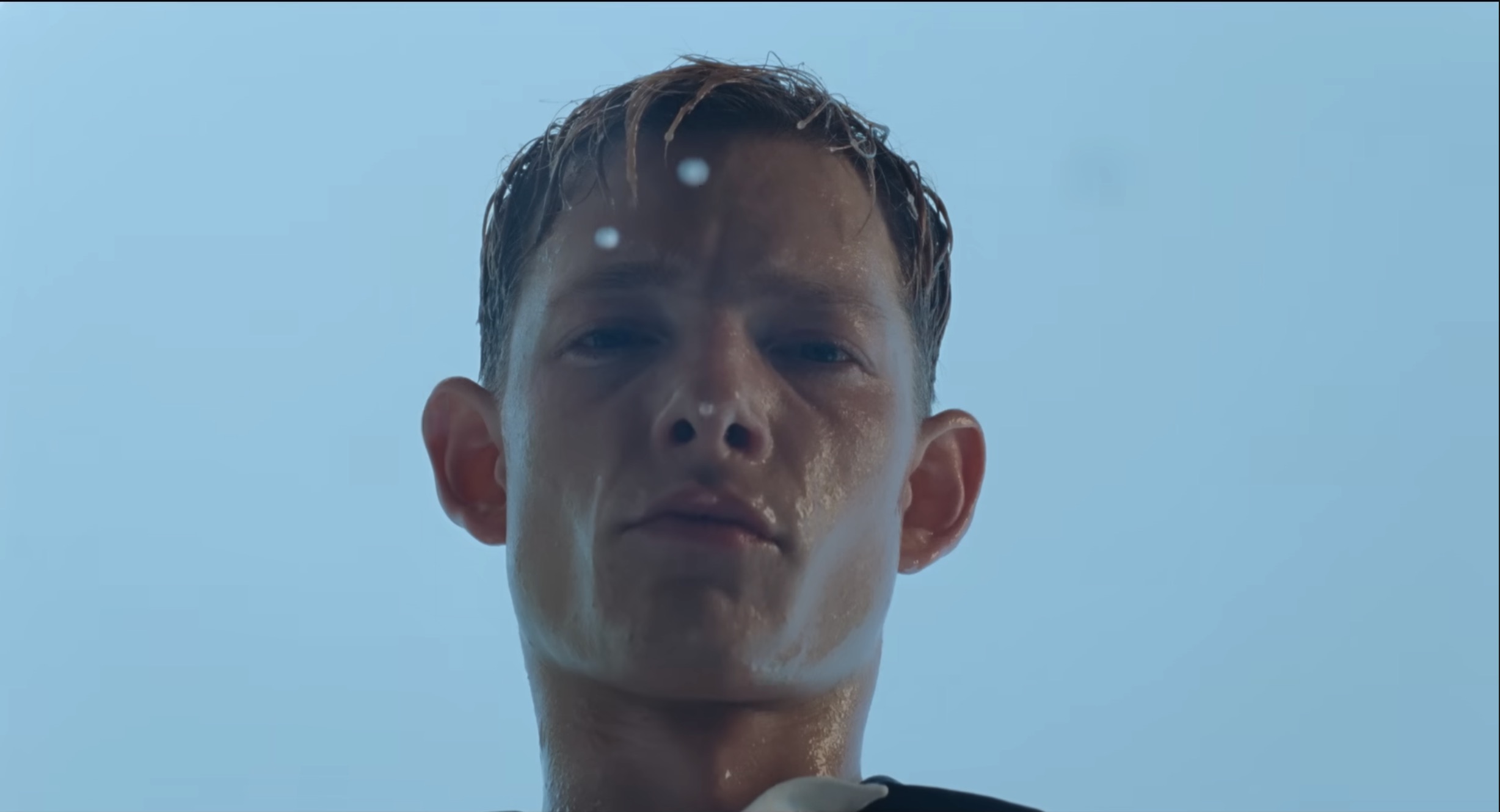
In those moments, with the tape rolling, as one or two of us almost competitively strove to deliver surprising and hilarious lyrics on the spot, and as we all tried to stay on beat and in instrumental harmony, we’d look at one another in amazement, hoping that this magic would stay with us for at least the next three or four minutes. In those moments, we brought out the best in each other, and any of the competitive impulse we felt in trying to catch each other off guard or out-perform each other melted away. We’d found another level, and we realized that this was what it was about after all.
I have recordings of almost two thousand songs that we spontaneously discovered in our amateurish endeavors. And I listen to those recordings all the time now, reliving the thrills of surprises that took place while the tape was rolling. How did we do that? How did we start playing a song that did not yet exist, making it up as we went, and every so often stumble into a kind of euphoric jam-band fusion that made us feel more alive than anything else we knew? Why does it feel so good, so rejuvenating, so motivating when we tap into that feeling that we are a part of something larger than ourselves?
Most artists who have been at their art for a long time know what I’m talking about. Either alone or in collaboration, they’ve experienced those rare sessions when something mysterious takes hold, and they work at a level beyond what they know is possible.
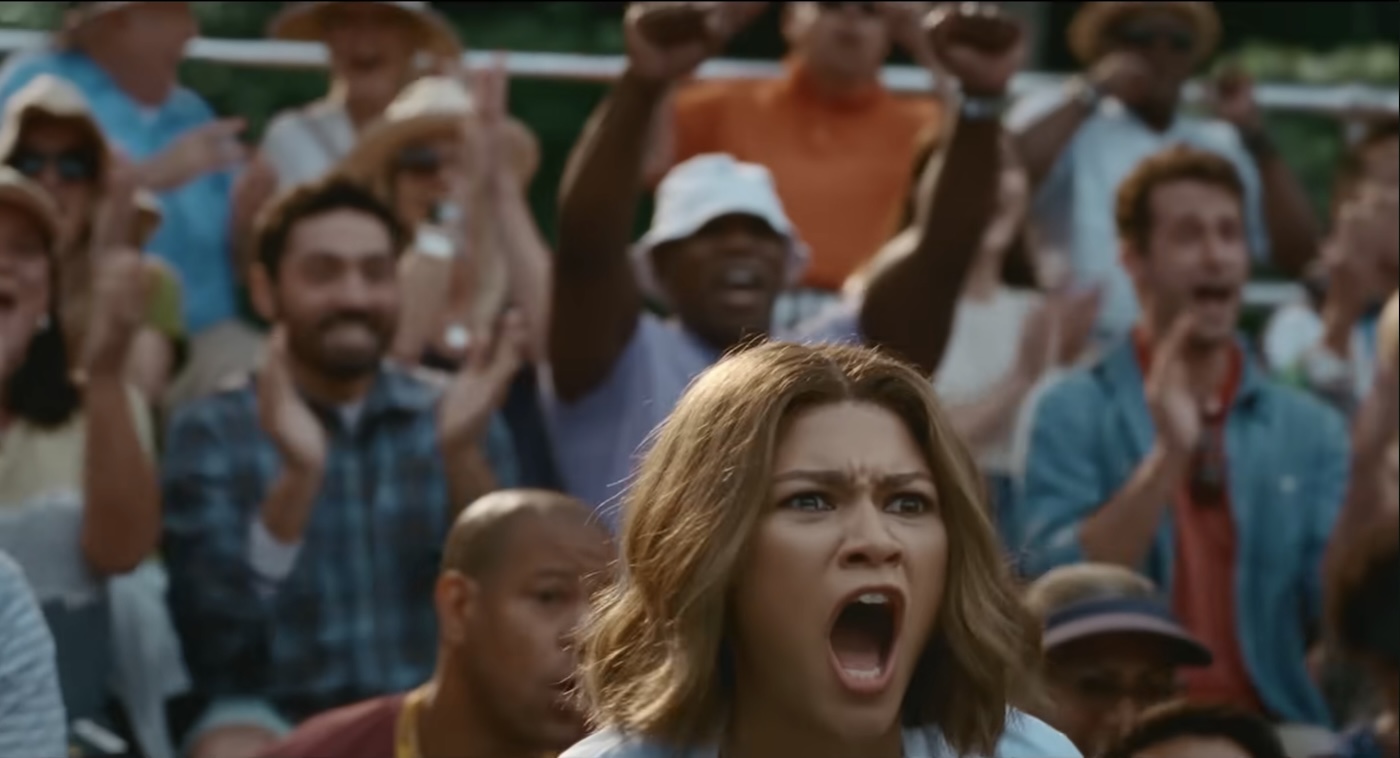
I have no trouble believing that career athletes know what this feels like too.
And that is what I love best about Challengers. It’s why the final moments of the film become, for me, profound.
The surface-level appeal of Challengers is the stuff of movies I’d usually avoid or dislike. The characters are reckless, selfish, manipulative, and downright cruel, reducing the ideas of love and sex to power games. File this one under “How to Deprive Yourself of Any Hope for True Love.” To quote Michael Stipe from "Wake Up Bomb": See ya, don't wanna be ya.
But what the movie is ultimately about, in my interpretation, is something important, something I care about deeply, something I pursue, something I miss and hope I get to experience again. For almost everyone else I've read on this movie, this is a movie about tennis and sex. And nothing else. For me, it's about so much more than that. Challengers is ultimately about devoting yourself so fully to an art that you arrive at something greater than fame or victory or anything you could claim as an achievement. It's about discovering transcendence.
As I published this review at Substack on May 4th — Star Wars Day — I should share these thoughts that crossed my mind even as I watched Challengers from the “comfort” of my AMC recliner:
Surely I’m not the only one who realized that the chemistry triangle of Art, Tashi, and Patrick bears a strong resemblance to the chemistry between Luke, Leia, and Han Solo in the original Star Wars.
It fits perfectly (except that nobody is anybody's sibling). Imagine Leia manipulating Luke and Han against each other to bring out the best star pilot or gunslinger in both of them. I mean, we actually get an “I love you” / “I know” exchange here. And Patrick is totally giving Han Solo's "You like me because I'm a scoundrel. There aren't enough scoundrels in your life" vibes.
I won’t be surprised if this inspires some rather R-rated fan fiction.
Oh, oh! We could call it Tashi Station.
Low-budget, high imagination: Riddle of Fire may someday be an all-ages cult classic
An early draft of this review was originally published on April 11, 2024,
at Give Me Some Light on Substack, months before it appeared here.
Subscribe, and you'll read many of these reviews while the films are still breaking news!
Riddle of Fire is now available for rental on a variety of streaming platforms including Amazon Prime and Apple TV+.
Apparently, New York Times film critic Jeannette Catsoulis finds the whimsical new adventure movie Riddle of Fire too drawn out, too tedious. “Viewers may need the patience of Job to remain in their seats.”
Similarly, Michael Sicinski, one of the film critics I respect so highly that I check his Letterboxd account routinely just to see what recent notes he's made, recently posted this—and only this—about Riddle of Fire: "There's nothing wrong with this, and it's actually pretty clever for what it is. The tone just clashes with my sensibility, so I pulled the plug. Your mileage may vary."
Whew — that's not encouraging. If I'd seen those responses before I saw writer-director Weston Razooli's debut feature film, I might have skipped it altogether.
For the record, I'm so glad I didn't. I haven't had more fun at the movies in 2024 so far than I had watching Riddle of Fire — first, with a vocally appreciative audience who were right on its strangely specific wavelength, and a second time with Anne, who couldn't wait to recommend it to friends and family. It's one of those movies that makes me pause and wonder what kind of movies I might have made if I'd followed that passion. One possible timeline has me striving to bring stuff like this — low-budget, high-ambition films infused with childlike inspiration — to the big screen.
And that is probably because it's made in a spirit that reminds me so much of the joy, the improvisational resourcefulness, and the rough edges of making movies with friends in the '80s and early '90s, running around with clunky shoulder-mounted video cameras, and then laughing in a mix of embarrassment and amazement at our VHS tape "dailies" (which were almost always single-take attempts). But that is not because of any failing on the filmmakers’ part. I suspect that disgruntled viewers are suffering a failure of imagination. Or maybe they just missed out on specific experiences that make this movie such a particular joy.
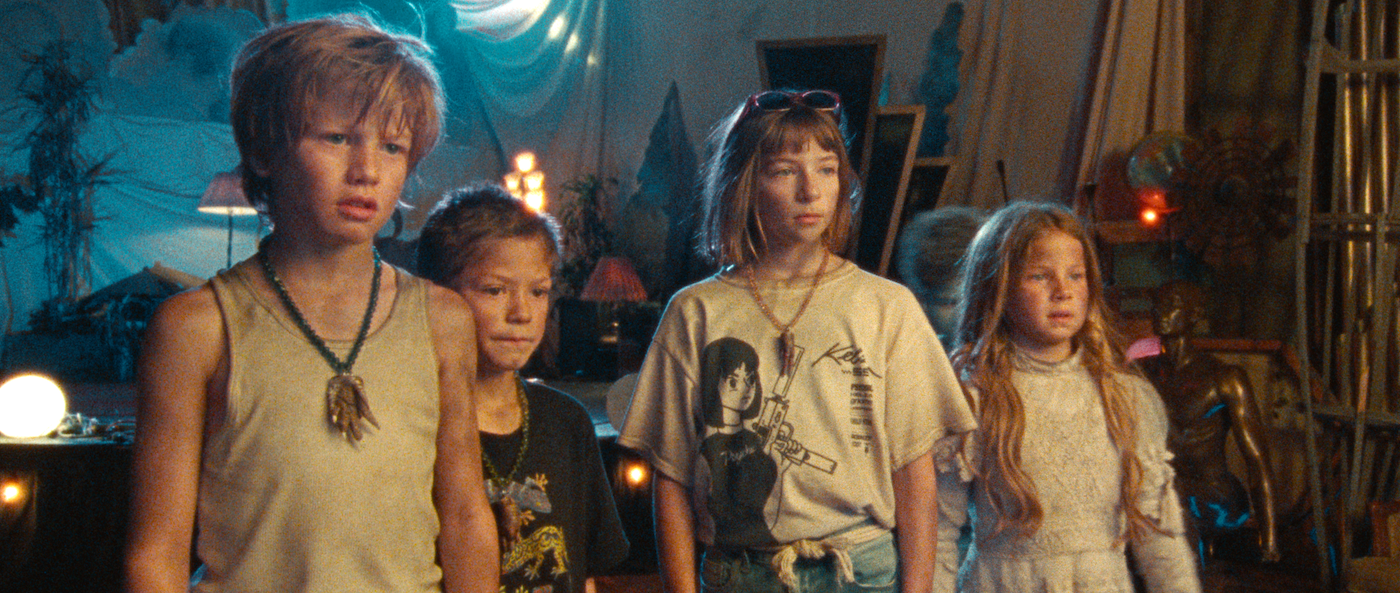
Just as a simple synopsis of Rob Reiner's The Princess Bride could never convey its distinctive tone, its tongue-in-cheek humor, its playfulness with low-budget constraints, or its childlike whimsy, so a plot summary of Riddle of Fire is going to leave readers clueless about what makes the movie special. Suffice it to say that the story is about…
- motorbiking brothers Hazel (Charlie Stover) and Jodie (Skyler Peters)
- and their girl-next-door friend Alice (Phoebe Ferro)
- who are all desperate to make a very particular blueberry pie for the boys’ sick mother Julie (Danielle Hoetmer),
- so they can convince her to give them the TV's parental-lock password
- and grant then access to the hottest new video game,
- which they’ve just stolen from a warehouse —
- but they need special ingredients to make that pie,
- including a speckled egg,
- and the last speckled egg in town has been taken by a grown-man bully (Charles Halford),
- and in tracking that grown-man bully around backroads of small-town Wyoming to recover the egg it for themselves, they discover a witch/taxidermist (Lio Tipton, who I recognized from Whit Stillman’s Damsels in Distress) who controls not only the bully but other lunkheaded crooks,
- and they also befriend a “forest fairy” (who may just be an imaginative mischief-maker) named Petal Hollyhock (Lorelei Olivia Mote),
- and this leads to lots of frightful hijinks in the forest after dark.
Does this sound boring to you?
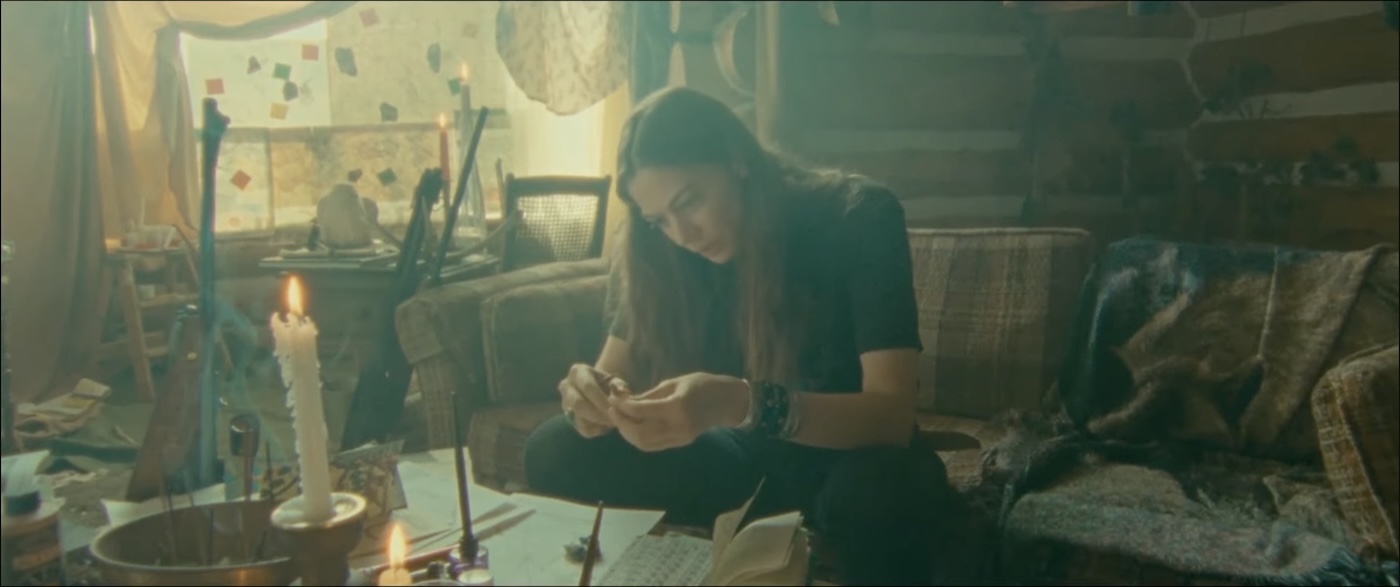
I hope not. Maybe you’re intrigued — I certainly was — by what sounds like a storyline made up by a fourteen-year-old. And if you find it enchanting, I suspect that you and I would get along well. This kind of kids' storytelling is, indeed, very much my jam.
But again — it’s not just the plot’s hodge-podge of fairy tales or its video-game-task-oriented outline that holds my attention. What I love best about this, and what makes its amusingly preposterous storyline work, is the How of the movie.
Riddle of Fire is a movie that looks like it was made by the same kids who are the focus of the narrative — if those kids had only late-'80s filmmaking equipment available to them, and if one or two of them behind the camera had the ambition and the energy of The Fabelmans' young Sammy Fabelman (that is, the young Steven Spielberg). If I were working in Hollywood and somebody handed me this tape, I’d call for a meeting with the kids who made it. I'd consider having them helm a reboot of The Goonies.
But it’s not as amateurish as I’m making it sound. There’s some real moviemaking going on here — moviemaking by grownups who know what they’re doing and have baked exactly the kind of pie from scratch that they intended to. Riddle of Fire may have been somewhat inspired by Stand By Me or The Goonies, but I think it’s something new; there is no Hollywood polish to any of Razooli’s work here.

The 16mm Kodak film stock, the fantasy videogame synthesizer score, the rural Wyoming landscapes (shot as if they’re a fantasy world of colors either muted and saturated by Jake L. Mitchell), the fantasy-film font that provides helpful subtitles to the softspoken Jodie (and only Jodie!) — every rough edge, every scratched lens, every unlikely exchange, every curse word dropped by a second-grader — it’s all evidence of the artists’ love for their vision, for who they once were, and for what they once loved when they were kids. You can feel that they’re giving themselves a gift — a movie no studio could have conjured for them. Razooli tells Fimdaze that the movie is made of “all my favorite things as a kid growing up in Utah.” He elaborates on what those are: “Everything you see in the movie. …. Dirt biking, paintballing, playing in the mountains, fly fishing, spying.”
The cameras treat the children like movie stars even though the kids are just being as awkward and impulsive and silly as little kids really are. It feels like a home movie — albeit an extraordinary one — that someone discovered on a dusty VHS tape in an attic (except for the fact that these kids have some uniquely fantastical smartphones that come in handy when they’re spying). And if you are old enough to remember using shoulder-mount video cameras or primitive “handicams” to make shaky fake action movies with your friends, you’ll probably love this.

The best equivalent for the singularity of Razooli’s vision might be Jared Hess's Napoleon Dynamite, which won the hearts of audiences by making so much of so little. Hess kept things simple, unpredictable, and quirky (I hate that word, but it’s inevitable here), finding most of his comedy in the idiosyncrasies of his distinctive characters. Riddle of Fire does too, and it will — if it gets enough eyeballs on it — become that sort of cult classic. Where Napoleon Dynamite reinvented the John Hughes high school comedy, Riddle of Fire is stirring some spicy Mad Max into its Goonies/Stand By Me stew, even though the kids’ weapons are paintball guns and their adrenalin-boosting drugs are just gummy worms. There’s even a sequence near the end that made me think of the Gary Oldman scene in True Romance, when the children are dragged before a dangerously unstable young man named Chip (Austin Archer) who is playing at being some kind of gangster.
Perhaps the success that found Hess will eventually come to Razooli. That would be fine with me. But then again, come to think of it, while I’ve enjoyed the movies that Hess made after his success with the “Vote for Pedro!” campaign, none of them, not even Nacho Libre, still shine with the singularity that Napoleon Dynamite had, probably because that first film was shaped by its restraints as much as its resources. As Lars von Trier has demonstrated with his documentary The Five Obstructions, when an artist runs into obstacles they might strike sparks that flare up into inspiration. Even as I hope that Razooli gets to make more movies, I hope he doesn’t forget the secrets of this movie’s recipe. Nothing else in theaters in 2024 tastes anything like this. I don’t need first-rate production values in a pie if there’s this much sweetness, spice, and love in the filling.
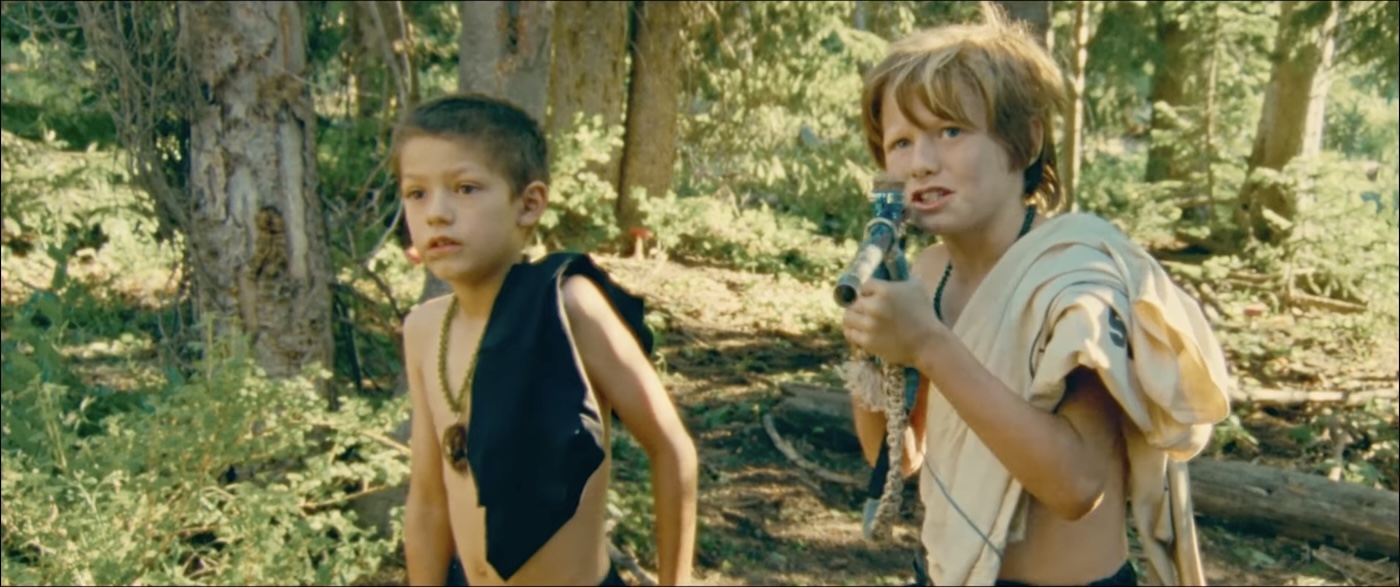
I'm disappointed that none of this really worked for Sicinski or Catsoulis. Sometimes critics just can’t find a movie’s wavelength. The great Roger Ebert himself complained that characters in Raising Arizona “talk funny.” (He wrote, “They all elevate their dialogue to an arch and artificial level that's distracting and unconvincing and slows down the progress of the film.”) I suspect that, later in his life, he probably came to accept and even enjoy the Coen brothers’ love for exaggerating accents and for stretching dialects like Laffy Taffy. Here, Catsoulis complains, “The young actors are winsome but inexperienced, too often forced to wrangle improbably precocious turns of phrase.” Frankly, that exact quality is one of the things I love most about the film, and I suspect that’s true of the filmmakers too. It’s exactly why fans are going to find it endlessly quotable.
Now — I feel a nudge to offer a caution: This is a film about elementary-school-aged heroes. And these kids have clearly grown up in contexts that have taught them how to cuss. Be warned! Hard-swearing children!

But if you understand that this is both part of the movie’s comedy and part of its sadness — the film’s most poignant moment comes when the children share the hard fact of their fathers’ absence from their lives — you’ll access another level of this game. Riddle of Fire is about the glory of collaborative imagination among children who need fantasy in order to survive. And that’s a theme I know and love because I’ve lived it.
Playful, nightmarish, fantastical, political: Problemista is all over the place
An early draft of this review was originally published on April 4, 2024,
at Give Me Some Light on Substack, months before it appeared here.
Subscribe, and you'll read many of these reviews while the films are still breaking news!
Would you rather see great storytellers for the screen invest their creativity in television series or standalone movies?
In my devotion to pop-culture’s conversation about movies, I strictly limit my attention to conversations about television series. While everyone’s encouraging me to watch The Bear and Succession and Atlanta and Fargo, I count the cost of such engagement in hours and consider how many movies I might see and write about in the amount of time a TV series would demand. That’s why I still haven’t seen more than an episode or two of Breaking Bad, or even Mad Men.
What’s more — my only opportunities to watch television occur in my limited hours at home with Anne, and as I love her company I will only commit to watching series that also appeal to her. We would rather spend our time together buried in books and filling up notebooks, not staring at screens. And our interests in onscreen art and entertainment only occasionally overlaps. So that limits what I’m likely to watch. (None of the titles I’ve listed above have appealed to both of us, and thus they remain unknowns.)
Am I missing out on great stuff? I’m sure that I am. All the time. But when it comes down to decision-making, I would rather see a complete work of art than an episode that has been largely influenced by a storyteller’s need to keep audiences coming back for more.
Once in a while, though, something gets its hooks into Anne and me both. We are card-carrying members of the Taskmaster cult — specifically the original version with Greg Davies and Alex Horne — because we love British humor, and because we need heavy laughs to help us cope with the layers of hardship that weigh on this season of our lives.
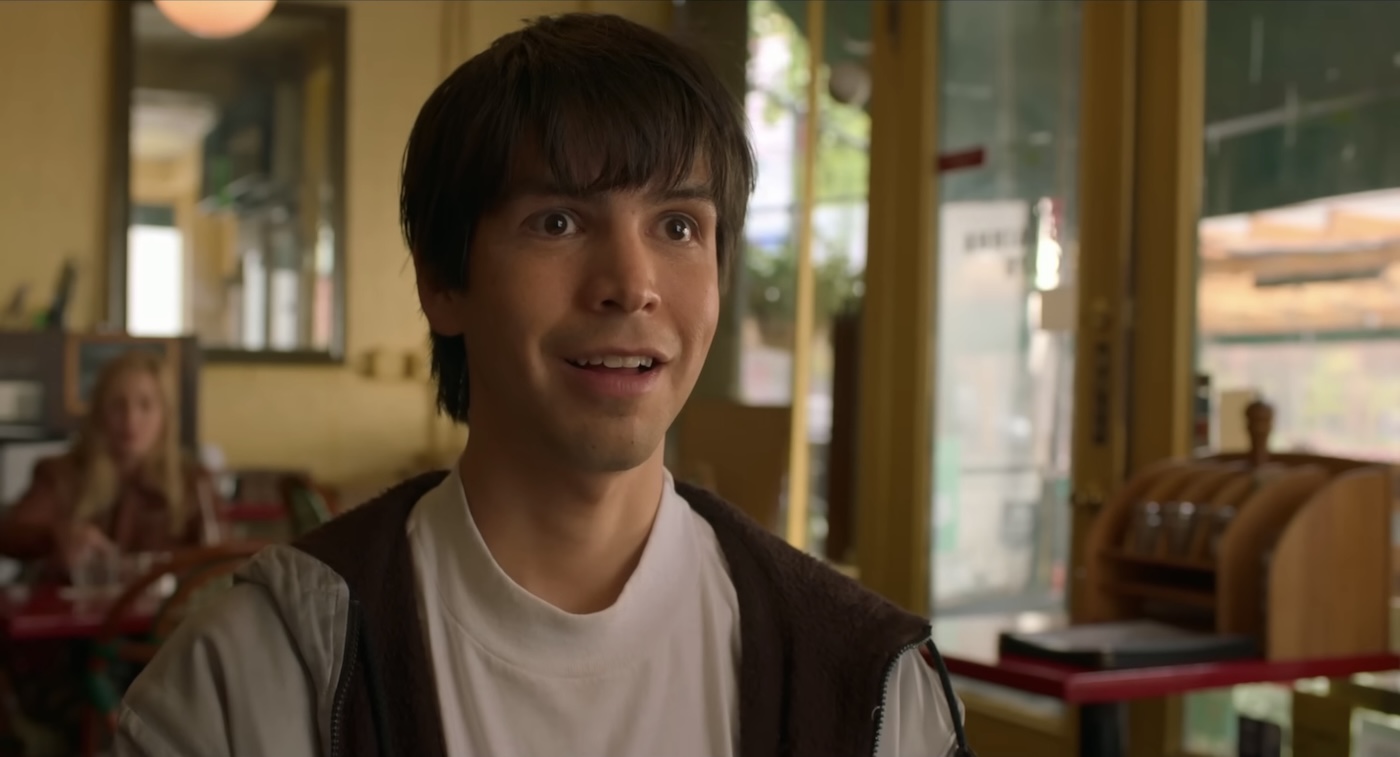
And it was laughter that drew us to visionary world-builder Julio Torres’s extraordinarily imaginative series Los Espookys. We loved both glorious seasons. We were dazzled by Torres’s wild, unpredictable, and singular imagination, and even more impressed that it was all coming from the mind of one of the colorful cast’s youngest players.
I was intrigued — if a little skeptical — to see that Torres was shifting his attention to big-screen comedy. Selfishly, I scowled. I want more Los Espookys! I love that world. I love that cast. I love those characters. But I trust Torres enough to follow him just about anywhere at this point. What would he do with a larger canvas? What could he accomplish with a two-hour, uninterrupted narrative?
And so, here we are — with Problemista.
The trailer certainly suggested that this would be a movie from the same imagination and for the same audience, with the added bonus of a big, crazy Tilda Swinton performance. And it is that.
Alas, I nevertheless find myself hoping that Torres will go back to television. Problemista is never less than amusing, but it inclines me to believe that Torres's hyperactive and irrepressibly good-natured imagination works best in short form. Either that, or maybe my imagination can only engage in such light-heartedly whimsical calisthenics for about 30 minutes at a time.

In a promising prologue narrated by Isabella Rossellini (her voice is more precious to me than ever thanks to her affecting work in Marcel the Shell with Shoes On), we learn about Alejandro’s El Salvador childhood, where his mother Dolores (Catalina Saavedra, who was so good in The Maid) prophesies an epic adventure in his future, one that will lead him to face a dragon-like threat in a dark cave. She also cultivates his imagination, and thus equips him to be creative and optimistic even in the face of heavy adversity.
And so, Alejandro begins his American adventure, aiming to survive the punishing ordeals of the U.S. immigration process. He faces challenges finding places to live, getting along with roommates (like Spray, played by Los Espookys’ memorable Spike Einbinder), and waiting in waiting rooms and immigration agencies for some kind of progress or grace. He’s motivated by a dream of becoming a Hasbro toy designer, which sets us up to imagine a Problemista / Barbie crossover sequel. The two movie worlds seem remarkably compatible, and Barbie plays a part in Alejandro’s portfolio of audacious ideas. Alas, this movie world’s Hasbro, like the Barbie movie’s Mattel, seems less like a real-world corporation and more like an impenetrable fantasy-world fortress guarded by monsters.
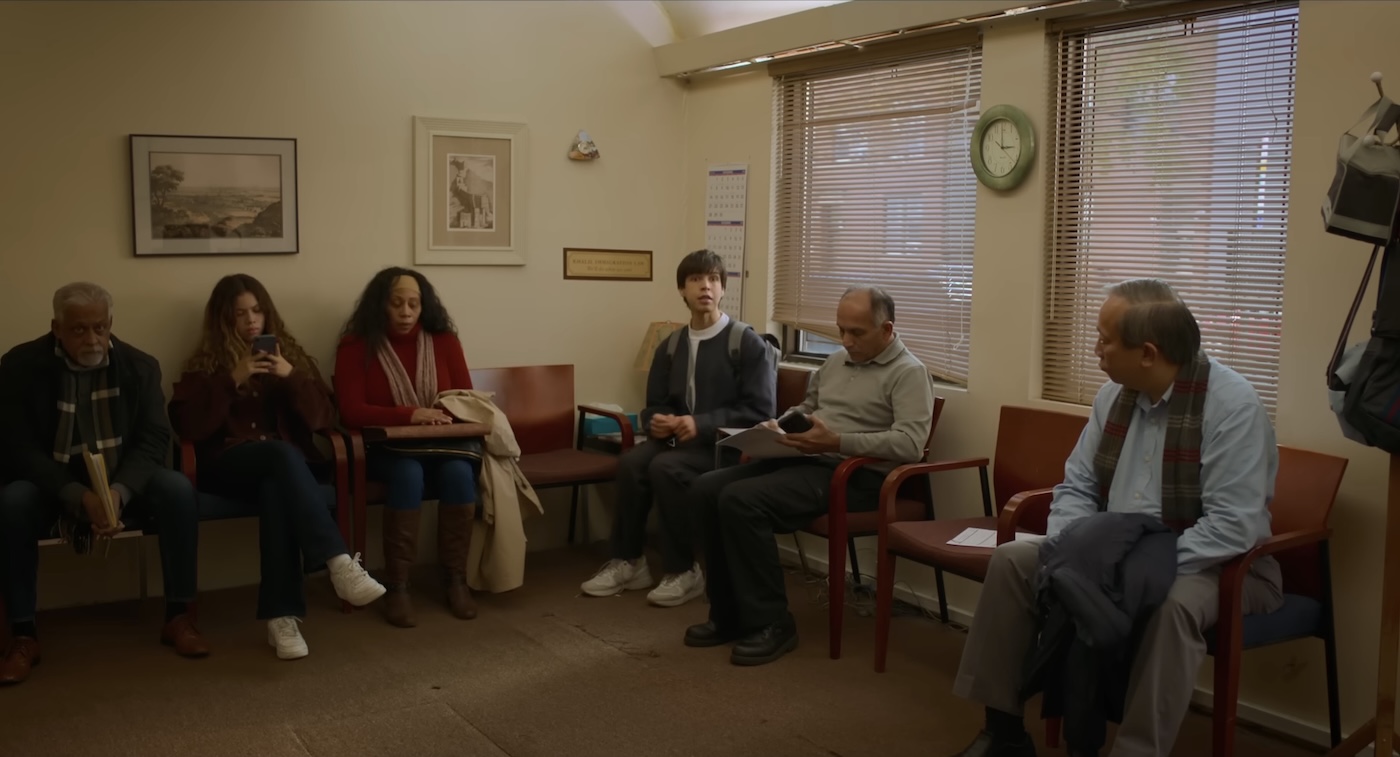
Things get worse for Alejandro when he loses his job at FreezeCorp, a company that seems like a close cousin to the Lacuna company in Eternal Sunshine of the Spotless Mind. Where Lacuna offered to delete people’s memories so they could start fresh without pain, FreezeCorp offers to cryogenically freeze people so they can be resurrected in a better future. It looks like the film is setting up another cynical take on how technology’s idealistic promise only leads us to bigger problems. But Julio Torres isn’t that kind of storyteller. While FreezeCorp kicks Alejandro to the curb (with what is arguably a good reason), the company will come back to haunt him — and, ultimately, bless him. But I’m not going to spoil anything here.
Desperate to get a new job that will sustain him in order to avoid deportation, Alejandro jumps at a chance to work for Elizabeth, an eccentric and technologically challenged woman who is grieving the loss of her partner’s recent death and trying to fulfill his dreams of having a great solo show for his paintings of eggs, images which come to amplify Alejandro’s unfulfilled American dreams.
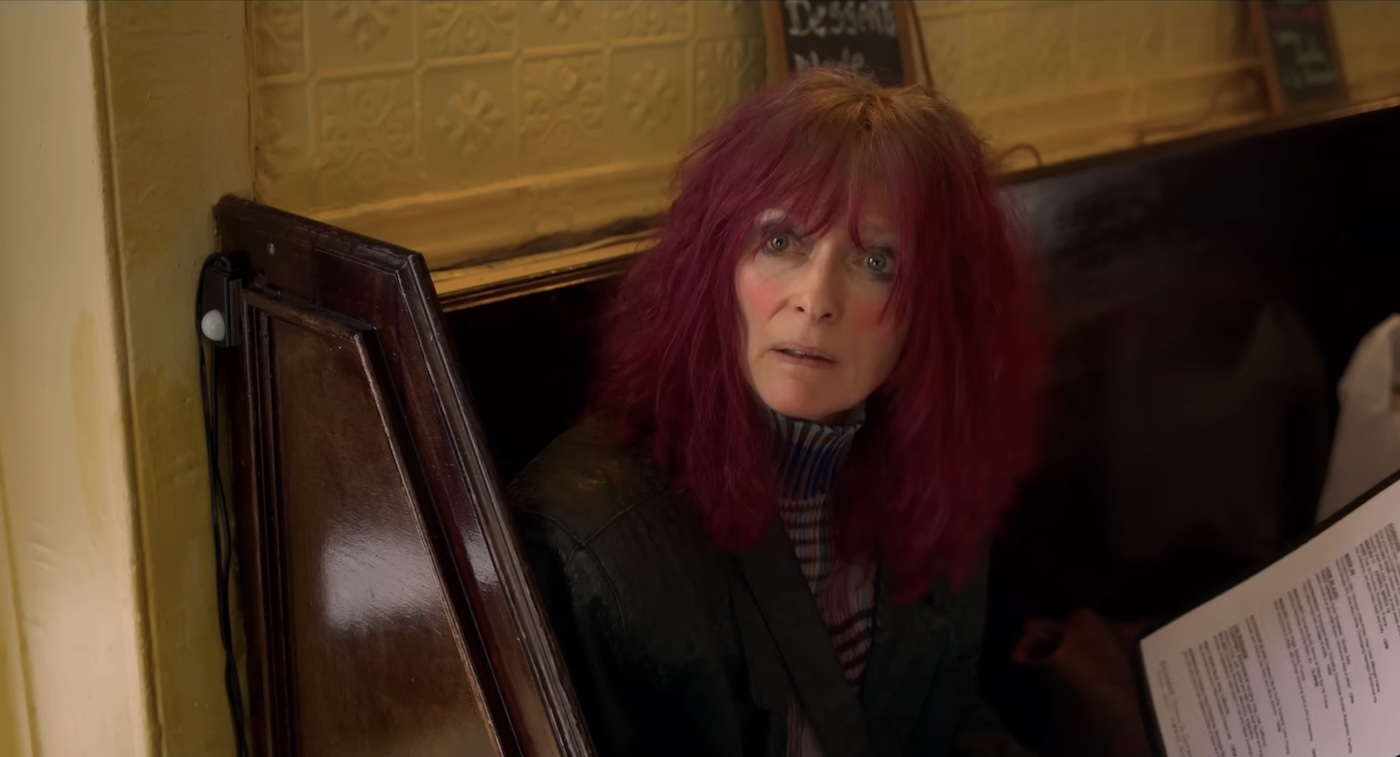
Elizabeth seems happy to employ Alejandro, but will she agree to be his sponsor? That’s the crucial question, and it means that Alejandro will have to devote himself to satisfying her every whim, which includes coping with her wildly irrational preferences when it comes to devices, software, and business management models. It should be obvious from her fiery fuchsia hair and her posture (which I can only describe as Nosferatu-like) that Elizabeth is the monster who was waiting in his mother’s dark dream cave. But Torres’s world is the kind of place where dragons that seem scary at first just might end up being friendly, like the Abominable Snowman in that classic Rudolph the Red-Nose Reindeer TV special, the one who just needed some delicate dental attention in order to become his best self.
Elizabeth isn’t the only problem in his path. His attempts to break into Hasbro with his inspired ideas for toy designs brings more trouble than opportunity. It seems that somebody is reviewing applications and portfolios for ideas instead of for employees, and pretty soon Alejandro is faced with the difficulty of pursuing a job at a company that is already exploiting him.
Another obstacle arrives in the form of Dalia (Past Lives’ wonderful Greta Lee), a former student of Elizabeth’s husband who refuses to give up one of his essential paintings.
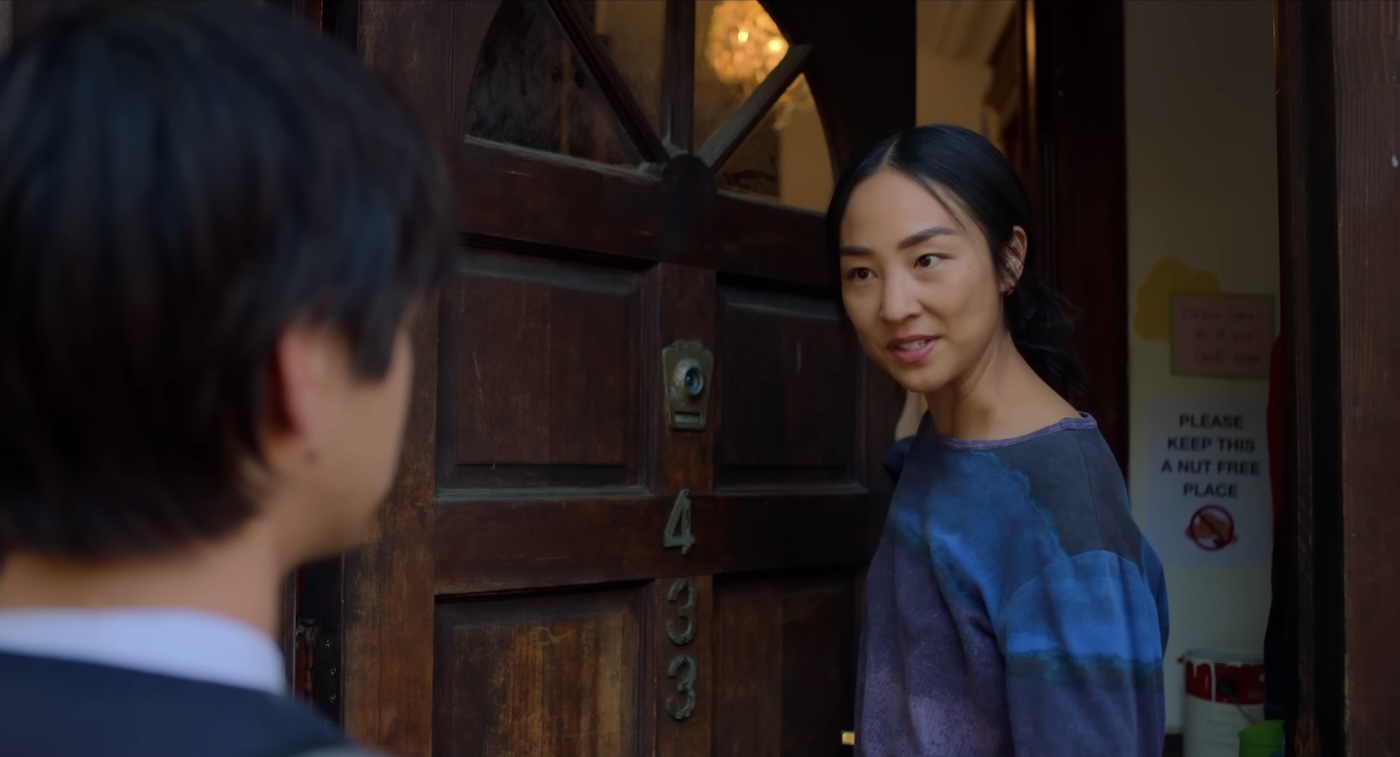
And when his work for Elizabeth takes a painful turn, Alejandro ends up sinking to even greater depths of desperation, taking jobs that ask far too much, and exploit him in dreadful ways — ways that might startle and upset even those who anticipated that Problemista would be a dark comedy.
I’m sorry to say it, but almost any episode of Los Espookys works better for me than Problemista does. Perhaps my hopes were too high. But I’m more impressed by his more concentrated, multi-layered mode of storytelling. The farther I follow Alejandro, the more the gravity of the movie’s real-world troubles chip away at the effectiveness of Torres’s more fantastical flourishes.
What’s more, in his narrative zigzagging, he hits a few potholes. In such a determinedly, good-humored fantasy, you can’t ask the audience to absorb heavy crises without giving them sufficient time to reckon with those crises. There’s a scene here in which Alejandro, bargaining with a supernatural villain called The Craigslist Demon, reluctantly accepts a job to earn some quick cash and then finds out he’s taken the bait of a sexual predator. What follows seems to catch Torres the Storyteller off guard, and he tries to course-correct quickly as if hoping we’ll forget that episode. I can’t. It’s sort of like discovering an extended cut of Pee-Wee’s Big Adventure in which Pee-Wee discovers human trafficking, and then he’s just back on his bicycle, whistling. When you slow down long enough to raise such demanding real-world problems, it’s hard to just go back to childlike playfulness without it feeling like stubborn naïveté.

Still, there’s much to enjoy here. Above all, we should appreciate that Torres gets from the great Tilda Swinton one of the most ferocious performances of her extraordinary career. Somehow, this actor under the direction of this storyteller finds some new notes to play: the ever-abrasive Elizabeth as presented to us through Torres's compassionate gaze gives us that rare character who is both a personal assistant’s Worst Nightmare Customer and someone whose aggressive ignorance we tolerate in the hope that she can find her way to stability and peace.
And as a big believer in the power of imaginative parenting to prepare children for all of the inevitable hardships of adulthood, I applaud Problemista’s picture of a mother who encourages her son’s playfulness. It’s that belief in possibility and creativity that serves Alejandro through his darkest hours.
So please understand — I’m not hastily dismissing this film. It’s delivered in a spirit of playful improvisation, and I believe in the power of “Yes, And” storytelling. And it’s about so many important matters that I care about. Do I empathize with Torres in his lament over the Kafka-esque labyrinth of the U.S.A.'s immigration "system"? Absolutely. Do I affirm Torres’s — forgive me, Dua Lipa — radical optimism? Sure thing.
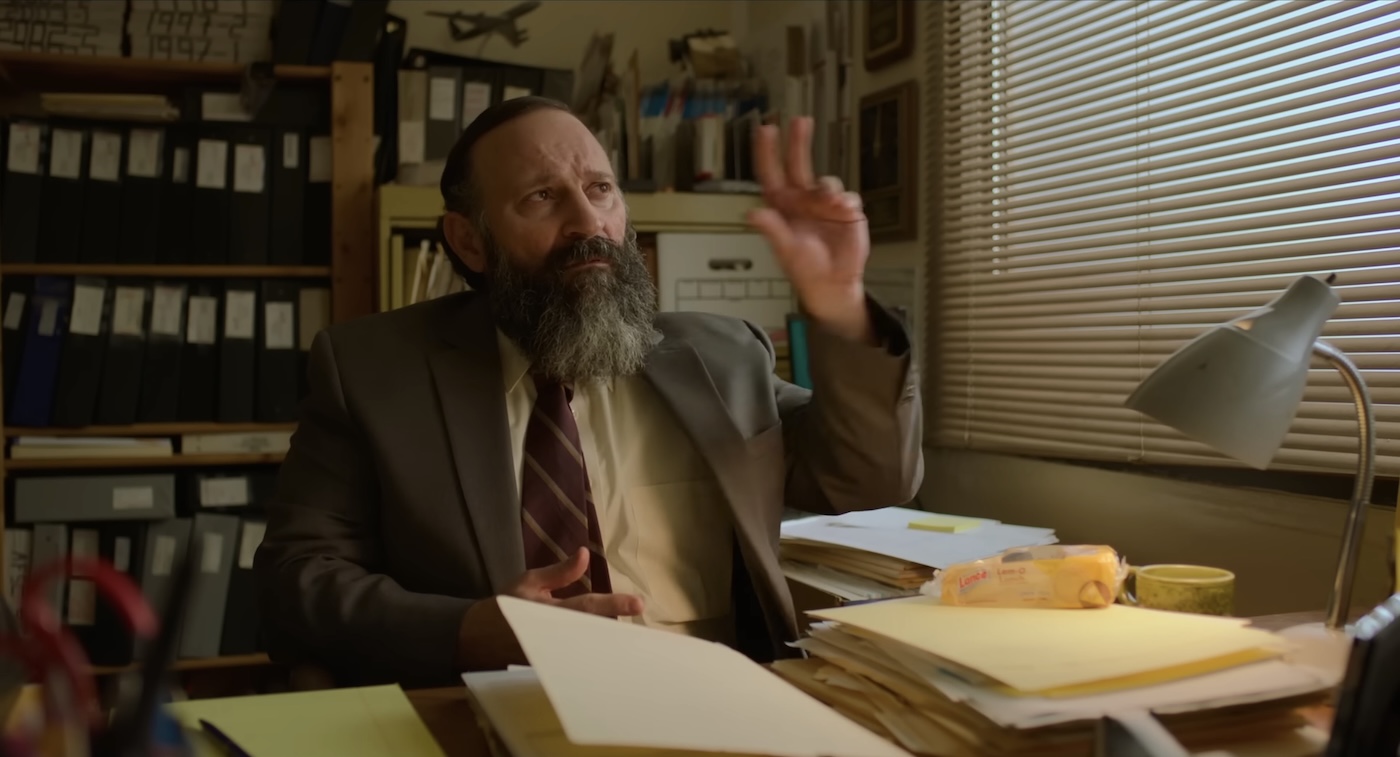
But when it comes to translating such fantastical busy-ness to the grand canvas of the cinema, we need someone who can manage the tricky business of a tonal balance. There are films like Peter Weir’s The Truman Show, Terry Gilliam’s The Fisher King, and now Greta Gerwig’s Barbie that invite us into fantasy worlds that look very much like our own, and that somehow address heavy real-world matters without disrupting the enchantment.
And while Torres shows great flair when it comes to colorful sets and wacky wardrobes, he needs a stronger sense of what is possible on a big screen. We need a composer of truly cinematic images behind the camera for a film with ambitions as big as this one. Much of this movie looked like television to me. (In fact, I can recall much more cinematic images in a season of Los Espookys than what I found here.) I wonder what would happen if Torres partnered with stronger visual imaginations. I found myself wondering what the inspired collaborators Jean-Pierre Jeunet and Marc Caro might have done with this, or Eternal Sunshine’s Michel Gondry.
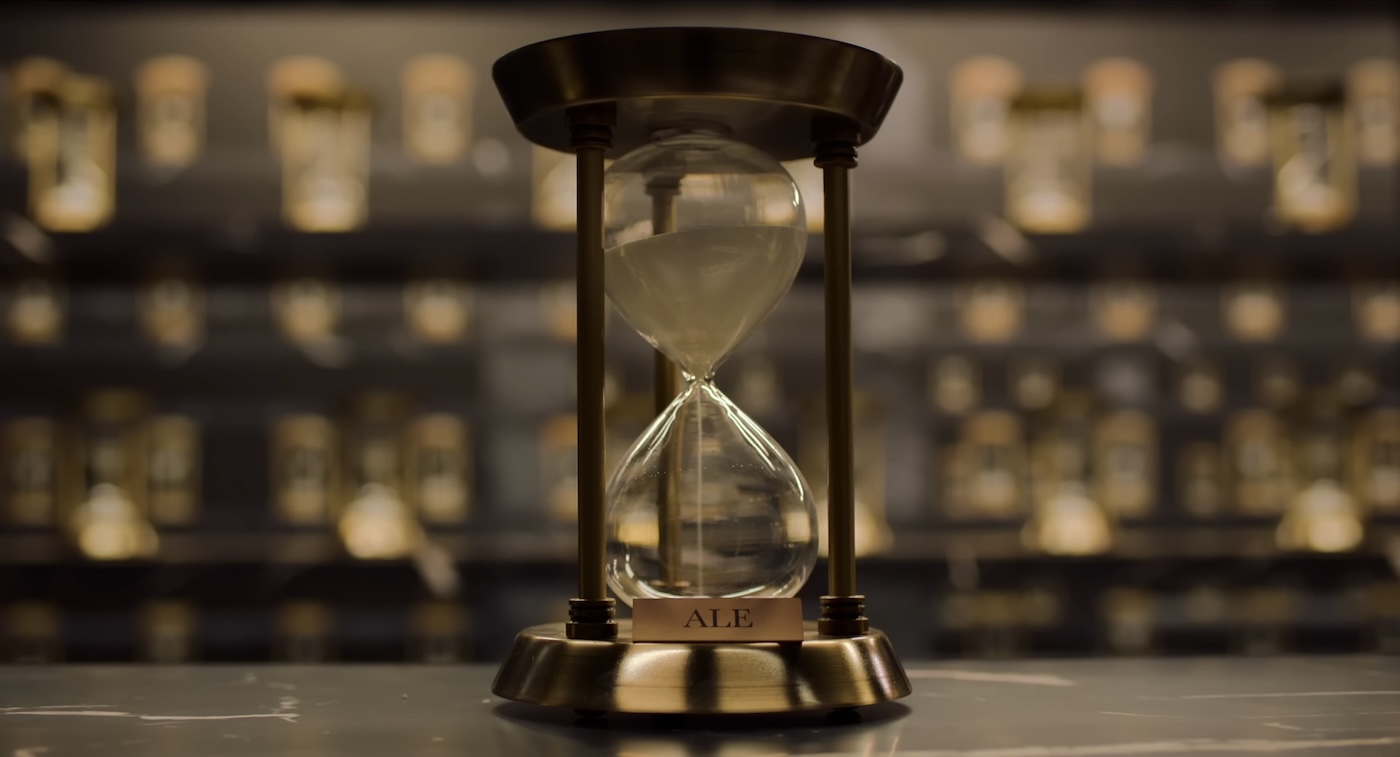
Ah, but Torres is still just getting started. Maybe this will prove to be for him what Bottle Rocket was for Wes Anderson — the one we look back on fondly as the first step in an extraordinary ascent to greatness. In the spirit of our inspirational hero Alejandro... here's hoping.
And hey, Julio Torres, if you’re listening — please don’t take my quibbles with this film as complaints. I won’t hesitate to buy a ticket to your next movie. And if you go back to television, I’ll follow you there too. The time invested in your world-building imagination has been well worth the time I’ve invested so far.
Cabrini celebrates a true Christian vision of embracing immigrants and opposing cruelty
An early draft of this review was originally published on March 28, 2024,
at Give Me Some Light on Substack, months before it appeared here.
Subscribe, and you'll read many of these reviews while the films are still breaking news!
Cabrini is a rare and pleasant surprise — a movie from a religious production company that generally avoids cringe-worthy proselytizing and — even more impressively — gives evidence that the filmmakers prioritize beauty and strive to fill the big screen with enchanting images.
But best of all, in a season when “religious media” vigorously promotes fascism, a surge of Christian nationalism that could not be more antithetical to Jesus’ teachings, and the demonization of those with brown and black skin, Cabrini celebrates a truly inspiring saint — Frances Saverio Cabrini — whose mission was to affirm that America is made of immigrants, relies on immigrants, and should never abandon its mission of welcoming and celebrating immigrants.
Going into the film, I knew next to nothing about St. Frances Cabrini…
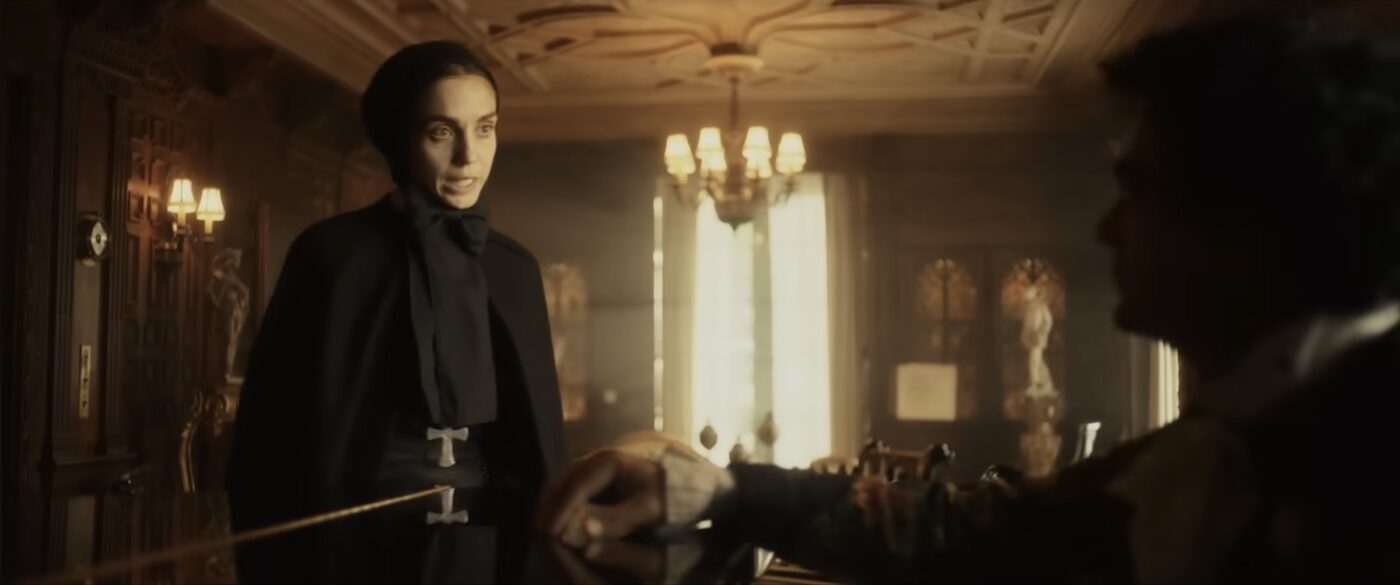
… and I still don’t know nearly enough.
But I can say this: Her story is extraordinary — just the kind of narrative we need to restore hope for change in a darkening world. She survived childhood tuberculosis and other afflictions that should have ended her story early, kept alive perhaps by her stubborn determination to change the world — specifically the East. When the Pope re-directed her energies toward America, she embarked on myriad missions of compassion and grace, defying authorities of both church and state.
As Steven Greydanus, in his excellent review for Catholic Spirit, reminds us (or, for some, informs us):
Today St. Frances Cabrini is celebrated as a pioneer: the first U.S. citizen to become a canonized saint, the first Catholic woman to lead an overseas mission, and the trailblazing founder of the Missionary Sisters of the Sacred Heart of Jesus, which runs charitable institutions the world over. Yet Cabrini emphasizes that none of it would have happened had Mother Cabrini been content to remain in spaces deemed appropriate for her by the powerful men around her. Opening on March 8, International Women’s Day, Cabrini evokes the much-misattributed remark of American historian Laurel Thatcher Ulrich that “Well-behaved women seldom make history.”
Unfortunately, a lot of critics are lining up to dismiss Cabrini outright — probably because director Alejandro Monteverde was responsible for last year’s appalling, fraudulent “social justice movie” fiasco Sound of Freedom, which gave QAnon conspiracy theorist and MAGA poster boy Jim Caviezel all kind of media attention and glorified a controversial and troubling figure who, thanks to the movie, was very quickly discredited. Despite the film’s apparent mission to fight sex trafficking, organizations involved in busting sex-trafficking operations around the world loudly protested, saying that the methods glorified in the movie were actually doing more harm than good.
So, no — I cannot blame anybody for steering clear of Cabrini, not when they’ve been so recently burned.

But I think we need to acknowledge, respect, and applaud the movie’s remarkable strengths.
Cabrini an old-fashioned sort of big-screen tribute to a saintly historical figure, a kind of movie we rarely see anymore. (I’m reminded of A Man for All Seasons, although this screenplay, for all of its noble intentions and virtuous ideals, has nothing on that film’s artful banter or sophisticated sparring matches between rhetoricians.) Rob Barr’s screenplay is thin on characterization and heavy-handed with metaphor. (How many times must we see the young Cabrini slowly sinking into a watery abyss of despair?) It’s about as subtle as an after-school special about bullying written to teach teens a lesson. And Monteverde never misses a cue for his hero to fiercely throw down quotable feminist slogans against her enemies or to set her jaw and fight back whenever she’s told that she’s meddling in territories where a woman “doesn’t belong.”
One thing that annoys me all the way through is that, even in crowded scenes, only the Most Important characters speak — and I use the word "characters" reluctantly. Sister Cabrini has only one or two distinguishing characteristics throughout, despite Dell'Anna's assertive embodiment of her stubborn conviction. Her “tuberculosis cough” may inspire our concern, but it doesn’t deepen our understanding of her character. Cabrini’s company of nuns follow her around like a flock of geese, saying nothing at all. It’s almost as if they’ve been deliberately silenced to save the production money. They’re rarely more than blank drones carrying out her instructions. Isn’t it kind of disingenuous, in a movie that’s supposed to champion the agency and genius of women, to make so many female characters seem so mindless, serving only as an aesthetic backdrop that accentuates the one whose name is in lights? Almost everything and everyone exist as accents or contrast, keeping our focus on the haloed saint.
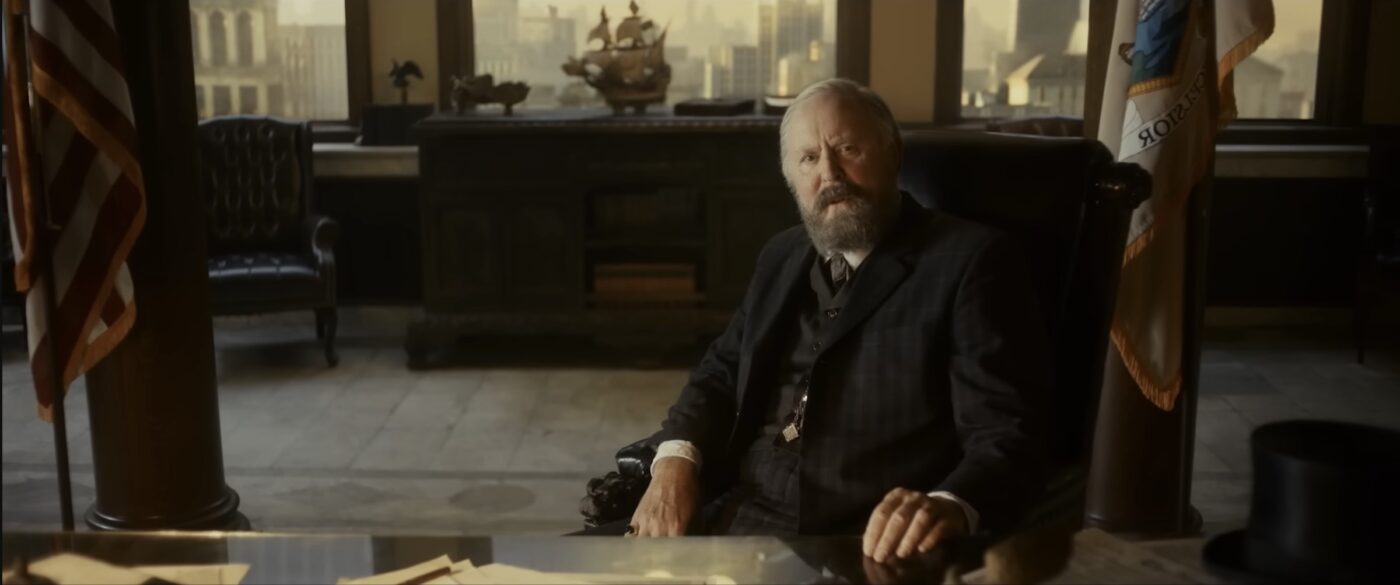
But it’s easy to forgive the shallowness, obviousness, and grandstanding when we’re treated to such impressive historic recreations of New York, evidence of the talents of production designer Carlos Lagunas and cinematographer Gorka Gómez Andreu. Thanks to them, you can smell the slums of New York’s hellish Five Points neighborhood, which the cops avoid, and where pimps and robbers and murderers rule. You can feel the chill of the swirling fog that engulfs the panoramic countryside just beyond the crowded cityscapes. (I remember thinking that this looks like the New York of Mark Helprin’s Winter’s Tale, an enchanted New York story that was spectacularly squandered in Akiva Goldsman’s terrible 2014 adaptation.) Lens flares and beacons are everywhere, going off like fireworks in cathedrals; like rays of prophecy in halls of government; like visitations of the Holy Spirit in dilapidated structures, wherein Cabrini envisions new institutions that serve the poor; like infusions of courage within cramped spaces where Cabrini is confronted by her male antagonists. They’re often accompanied by a symphonic score that demands our hearts be moved. Monteverde sets his film in oceans of classical music, seemingly inspired by Terrence Malick techniques in The New World, The Tree of Life, and A Hidden Life.
And Gómez Andreu’s camera is in love with the clenched jaw and burning eyes of his leading actress: Cristiana Dell’Anna, who, as the spirited Mother Francesca Cabrini, stares directly into the camera, seemingly incensed with all of us for allowing anti-immigrant agendas to advance here in 2024.
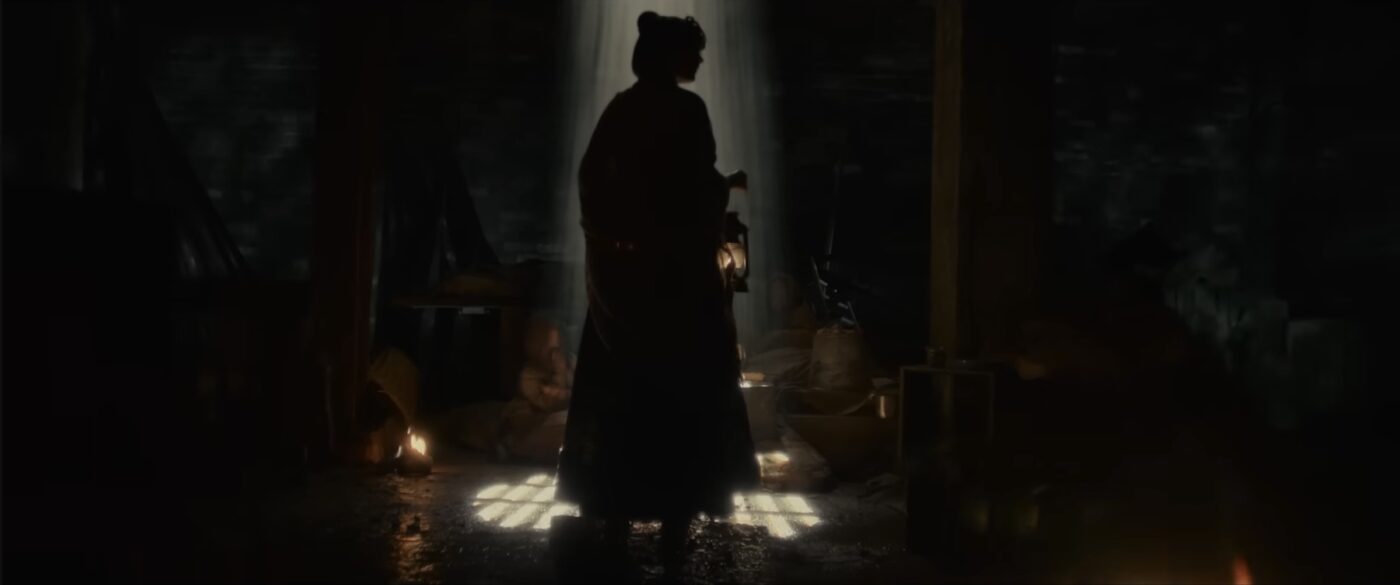
The film’s most nuanced performance comes from David Morse as an endearingly obstinate Archbishop of New York. The most quietly engaging turn comes from Patch Darragh as the tender-hearted Dr. Murphy, who gives Cabrini the vision for a great New York hospital. John Lithgow is here, chewing cigars and quaffing glasses of whiskey as the cartoonishly and buffoonishly terrible anti-Italian Mayor Gould of New York. And Jeremy Bobb makes a strong impression in just a few minutes’ screentime as a New York Times journalist who informs the world that “rats have it better than children” in the city Five Points neighborhood.
But perhaps my favorite turn in the film is the most complicated one. Giancarlo Giannini is a legendary Italian actor whose impressive credits span more than half a century of great cinema. Here he plays Pope Leo XII, whose initial resistance to Sister Cabrini’s appeals soften as he begins to see the folly in the patriarchal institution’s oppression of women. Whenever we see the pope turn to reckon with Cabrini’s challenges, the gravity of the character’s intellect and conscience is compelling. In a film that is simplistic on the page, Giannini and Morse are the actors who do so much more on the screen than what they’re given by their scripts.
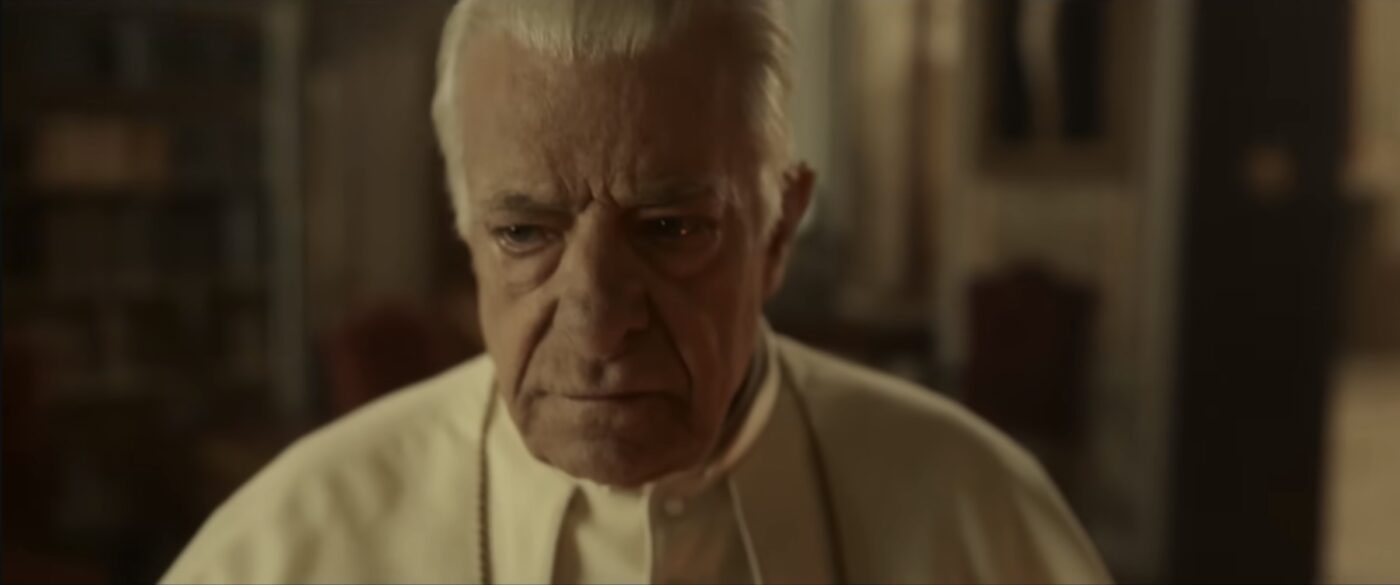
And yet, while the movie's "Saint Good, World Horrible" dynamic isn't going to challenge us toward any meaningful revelations, I cannot just shrug and brush this movie aside like so many of my colleagues. We cannot underestimate the fact that Cabrini is being promoted to American evangelicals and MAGA audiences with an emphasis on the glory of immigrants as the lifeblood of America. It sounds like a movie that Governors Ron DeSantis and Greg Abbott would loudly expel from Florida and Texas cineplexes. It sounds like a movie that makes Trump's vile rants about immigrants as "animals" and "vermin" and "not even human" sound like the satanic calls for cruelty that they really are.
What’s more, Cabrini rightly asserts as a fundamental of true Christianity that followers of Jesus are identified as those who serve the stranger and who welcome the immigrant. Monteverde does not hold back in making a joke of the Christian tradition’s counterproductive reliance on prejudicial patriarchal systems.
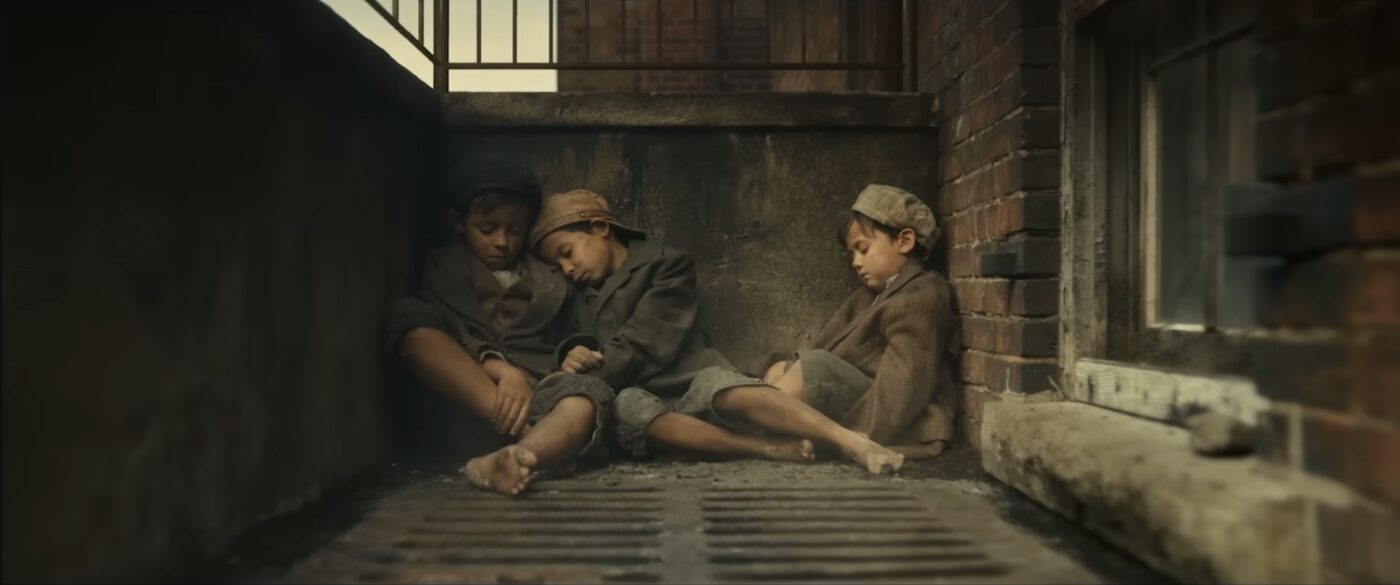
Overall, this movie seems far more likely to sensitize people to the cruelty of the GOP’s anti-immigrant, anti-woman, anti-democracy, anti-Christ agenda than to rally them towards it. (But then, Trump is out there vigorously selling Bibles to raise money for his legal defense, the very Scriptures that consistently denounce everything he says and does. I have to assume that MAGA-types are all but illiterate when it comes to what’s actually inside the Bible’s the Scriptures they claim as their foundation. If they found the Jesus of the Bible standing in their path, they’d crucify him again without blinking.)
I admit, I cringed and I groaned when Cabrini’s end credits were interrupted by a huge QR code, part of the movie's marketing ploy, begging us to get our phones and “Pay It Forward.” (The vast cineplex theater I was in had exactly five moviegoers in it.) And I laughed when a timer appeared at the bottom of the screen like an apology for the fact that end credits are necessary at all, accompanied by a desperate appeal to "PLEASE" stay and listen to a cheesy end-credits song about being a light in the darkness.
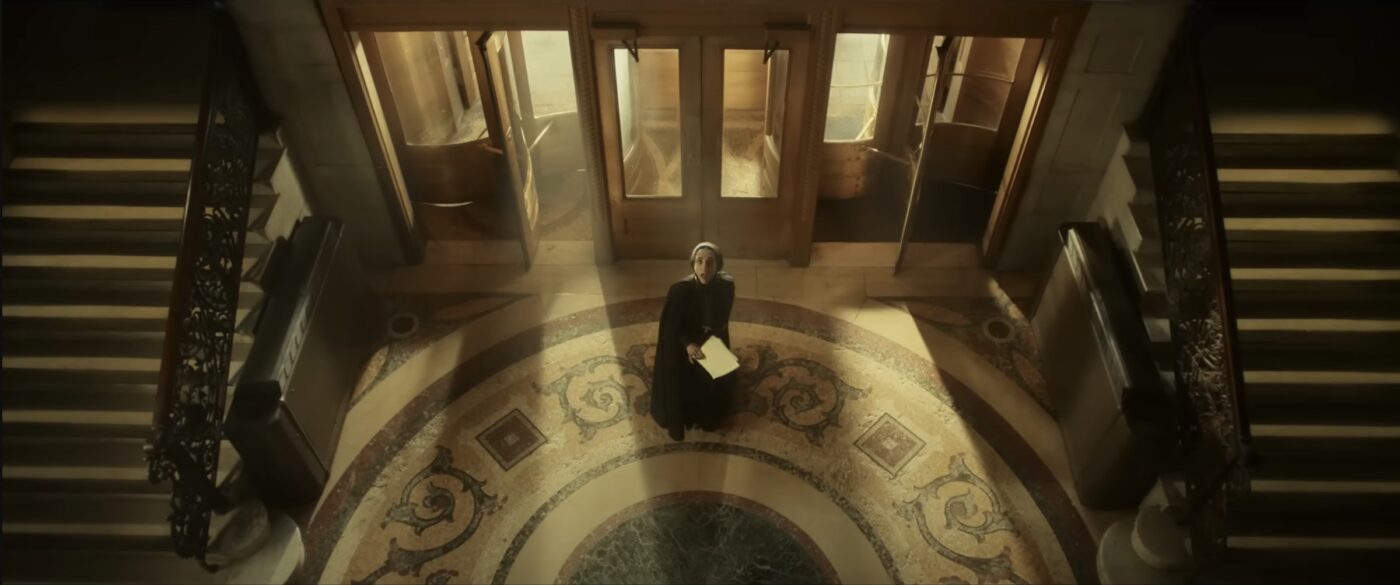
Still, I’ll take Cabrini any day over another Jim Ca-jeezus White Savior Propaganda film. Or another movie about how prayer wins football games. Or another one about evangelical college students should rise up against intellectuals and scientists and those who actually use the brains God gave them to investigate the world’s mysteries. Best of all, there’s no glimpse anywhere in these New York streets of either Kirk Cameron or Kevin Sorbo.
I think we should be glad Cabrini is out there. Angel Studios could do the world some good if it invested in more "religious" filmmaking of this variety, slowly steering the ship in the direction of inspiring artistry and away from preachy entertainment, and appealing to our conscience, and prioritizing the poor and the vulnerable, instead of aggravating our cultural polarization and reinforcing systemic corruption.
I keep wondering about the four other moviegoers who saw Cabrini with me. If they were fans of Sound of Freedom, I hope they found this sobering and substantial. If, like me, they walked in skeptical and perhaps even a little cynical, I can empathize, but I hope they came away encouraged.
Love Lies Bleeding "hulks out" with surreal surprises
An early draft of this review was originally published on March 21, 2024,
at Give Me Some Light on Substack, months before it appeared here.
Subscribe, and you'll read many of these reviews while the films are still breaking news!
In my classes on writing poetry and fiction, we focus intently on suspending our readers' disbelief with the power of startling specificity. Are your readers looking at a page and seeing vivid imagery in the world you create? Hearing specific voices within your distinctive world of sound? Or — here’s the toughest one — breathing the particular air of your environments? (Olfactory capacities are the most difficult to awaken with writing.) In short: Do your readers believe? Regardless of whether your premise is plausible, does it feel true enough to readers that they don’t feel the pages turning?
The premise for Love Lies Bleeding, the new film from director Rose Glass, is highly implausible — even more unlikely than the narrative of her first feature, the riveting religious horror film Saint Maud. But while it's as nuts as a pitch for “The Incredible Hulk meets Thelma and Louise meets Mandy,” its world is so immersive, so particular, I had no trouble suspending disbelief. It made me laugh in the midst of severe scenarios. It made me care about crazy characters. And in spite of its bleak and violent vision — I find myself eager to see it again.
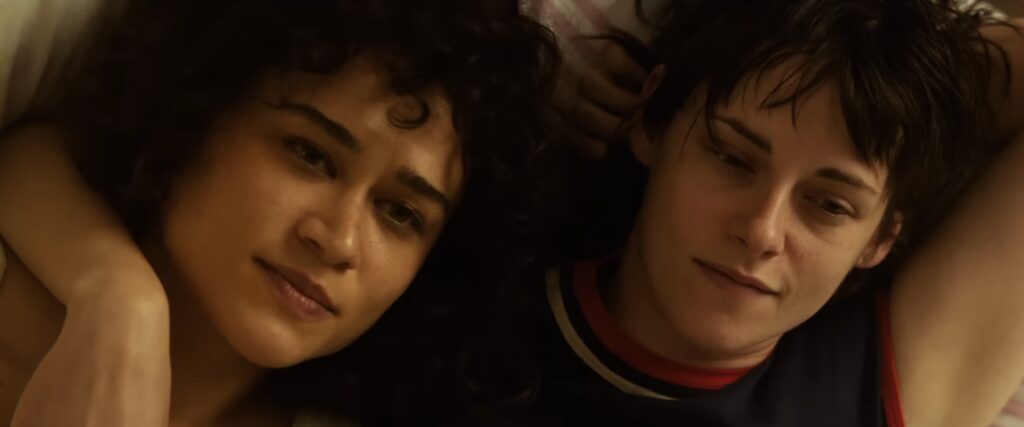
Try this on: Lou (Kristen Stewart) spends long miserable days working at a gym in small-town New Mexico, doing everything from managing memberships to cleaning toilets. She has good reason to hate life; Lou’s the resentful daughter of a rural crime lord named Lou (yes, you read that right). He’s violent enough that she’s too scared to turn him in, even though F.B.I. agents are showing up at her workplace with questions.
One day, Lou’s luck changes: A female bodybuilder named Jackie (Katy O’Brian) shows up in town and takes a job at Lou Sr.’s gun club — which is called "Louville" (yes, you read that right). When Jackie walks into Lou Jr.’s gym, the two start sharing steroids… and more.
But this isn’t the kind of town where love, dreams, or conscience stand a chance. When Lou’s abusive brother-in-law (James Franco) takes one swing too many at Lou’s sister (Jena Malone, who, let’s face it, should always play Kristen Stewart’s sister), well… Lou thinks she might have found an advantage: a girlfriend who can punish any abuser in town. Pretty soon, the movie’s title makes too much sense. And Jackie’s steroid problem becomes a problem for everyone — especially her new enemies.
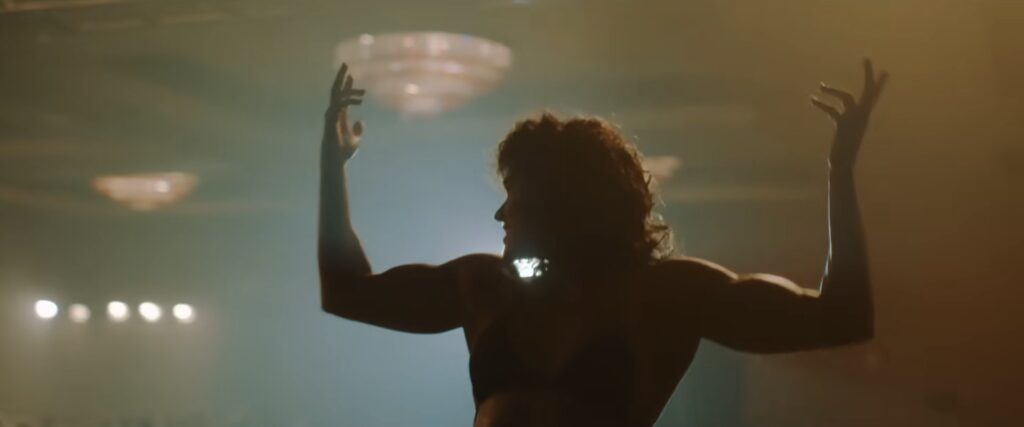
If that sounds crazy, well, trust me — it’s gets crazier.
And yet, I believed. In a season when theaters are saturated with formulaic media, it’s a rare thing to have an experience where you believe in something this bonkers, where you care about characters caught in such preposterous circumstances, and where you’re leaning forward moment to moment with no idea what will happen next.
Just as I quickly fell under Saint Maud’s spell, I was happy to be trapped in this movie’s ridiculous New Mexico twilight zone. I felt dust stinging my eyes when the wind blew. I could smell the sweat in Lou Jr.’s gym. And I believed the movie’s wild rides into magical realism — because Lou and Jackie believed them (and Stewart and O’Brian give convincing performances in surreal situations). It’s almost as if the intermingling of their steroid-saturated bodily fluids has given them a shared alternate reality, and we’re not sure whether we’re watching a monster movie or madness.
I’m more surprised than any of you that I came out of the theater a fan of Love Lies Bleeding. I’d walked in with some trepidation.
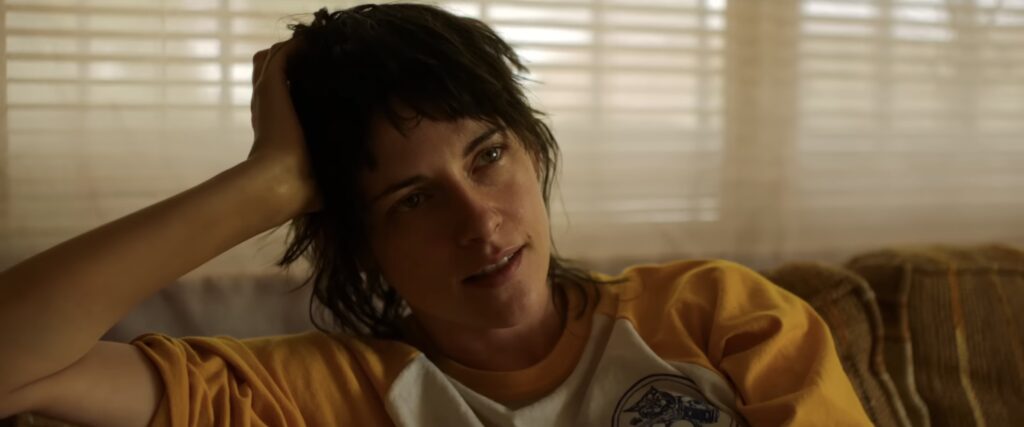
And I had three good reasons for that:
- Movies full of gunshots usually make me wish I’d spent the time doing something more worthwhile, and there are a lot of gunshots in this movie. In the real world, gun violence is a curse. In the movies, it’s so ubiquitous that it’s a bore.
- Movies that linger on lesbians in love often aggravate me because so many are off-puttingly lurid and so obviously designed to delight adolescent male moviegoers. And much of the film’s big buzz has come from the promise of seeing superstar Kristen Stewart in explicit girl-on-girl action. My LGBTQ sisters deserve respect, not exploitation. So, I was inclined to give this movie a pass (until word of mouth from reliable critics convinced me to give it a chance).
- I can’t quickly recall any films focused on bodybuilders or boxers or wrestlers that has made me admire or care about all of that obsession with muscle.
But now that I’ve seen Love Lies Bleeding, I can address each of these issues.
First, the gun violence. Most of the action in Love Lies Bleeding transpires at or around a gun club called Louville, run by — who else? — Lou (Ed Harris). Lou also happens to be a criminal kingpin who knows where a lot of bodies are buried because, well, he buried them… after he perforated them with is pistol. But the gunfire here is mostly background noise meant to keep us on edge. And Ed Harris, savoring a chance to play a devil, is scary and hilarious. He’s scare-larious!
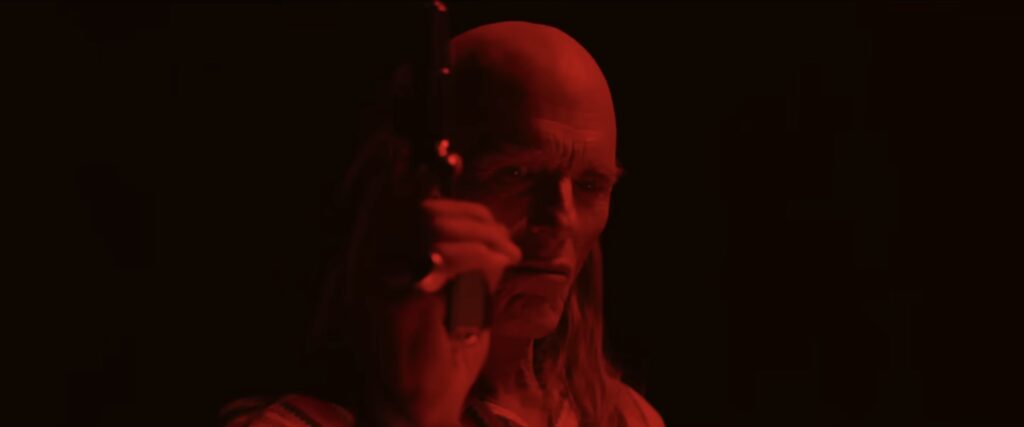
Second — what about those much-hyped, hot-and-heavy sex scenes? Frankly, they’re fleeting and they’re filmed without gratuitous nudity. (This film might rate a “4” or a “5” on the Explicit and Unnecessary Sex Scene chart, where the Oscar-winning Poor Things, by contrast, would break the chart at “11.”) Their intensity has more to do with just how desperately these needy lovers reach for one another in a world that has taught them to distrust, fear, and even revile most men.
And what about the bodybuilding? Don’t worry. This isn’t Pumping Iron or The Wrestler. Close-ups on bulging biceps play more as premonition; they represent the pressure building up that will eventually blow open Lou Sr.’s hermetically sealed crime world. I anticipated that the climactic violence would take place in Las Vegas at the competition that Jackie’s been training for, but that doesn’t happen. The movie is much more interested in unleashing Lou’s musclebound dreamgirl in Lou Sr.’s misogynistic hellscape.
I admire how director Rose Glass made me believe in the two women at the center of her first surrealistic horror film. Saint Maud is about a lonely, isolated, wounded young nurse (Morfydd Clark) who, as a result of past trauma, is prone to believing in her own personal fantasyland, one influenced by a perversion of Catholic piety. She believes she’s on a supernatural mission to save the soul of an ailing dancer (the great Jennifer Ehle), when, in fact, she’s actually manufacturing a sense of purpose and looking for excuses to lash out at anyone who might interrupt her intimacy with her patient. And so, Maud becomes dangerously possessive and deluded about the truth of her situation. Glass, like a writer committed to an intense limited-third-person point of view, directs the film in a way that traps us within Maud’s altered state. We have to ask if what we’re seeing is a manifestation of Maud’s madness, or if she might in fact be making her own fantastical visions come true.

Love Lies Bleeding is an altogether different film in style and substance. And yet, we can see that Glass is revealing what I hope will become the central thematic thread of a long and fascinating filmography. Lou, like Maud, is lonely, isolated, wounded, and — likely as a response to trauma — quick to give in to delusions if they will lead her to love (or something like it). And so, once again, moviegoers spill out into the lobby immediately questioning whether or not they should take the film’s climactic violence literally. This story slowly metamorphizes from a homoerotic thriller to something more like a monster movie. Glass ever so gradually steers us off of the freeway of familiar stories about women who join forces and try to beat their oppressive system, and then she drives us into a darker world of magical realism.
A lot of critics are comparing this movie to the Wachowskis’ erotic noir Bound — for obvious reasons. But the movies that I ended up thinking about most, quite unexpectedly, were Kitty Green’s The Royal Hotel and Tomas Alfredson’s Let the Right One In.

Green’s movie is about two young women who seek adventure in a hot, dusty, isolated environment where the resident men circle them like predators and the resident women laugh as if this is just the way of the world. It’s sensual, it’s fierce, and it’s a pressure cooker of righteous anger that leads almost inevitably to climactic violence. I was disappointed by its abrupt, unimaginative conclusion. By contrast, Love Lies Bleeding is much more interesting. Instead of making it easy to pick sides in an us-versus-them fight, it asks us to question whether or not we think these two rebels with good causes are making wise choices.
Alfredson’s moody vampire movie introduces us to a vulnerable and traumatized young boy who, having no one else to help him in a world designed to ruin him, so easily accepts the offer of a vampire’s love in order to gain an advantage — even though that would mean killing for the sake of survival. Its conclusion is truly horrifying. We have to ask ourselves, “What are we endorsing as our tortured young protagonist makes his escape?” Let the Right One In is a tragedy. And while Love Lies Bleeding is primarily a pitch-black comedy, I’d argue that its closing notes suggest something similarly tragic. Glass makes us squirm in the movie’s final moments, making it impossible to ignore the body count that these lovers are adding up. They may think they’re headed off into a “happily ever after,” and we might think so too. But note where Glass chooses to close to the story. Is it meant to be a joke? Or a reality check regarding the kind of person Lou Jr. is becoming?
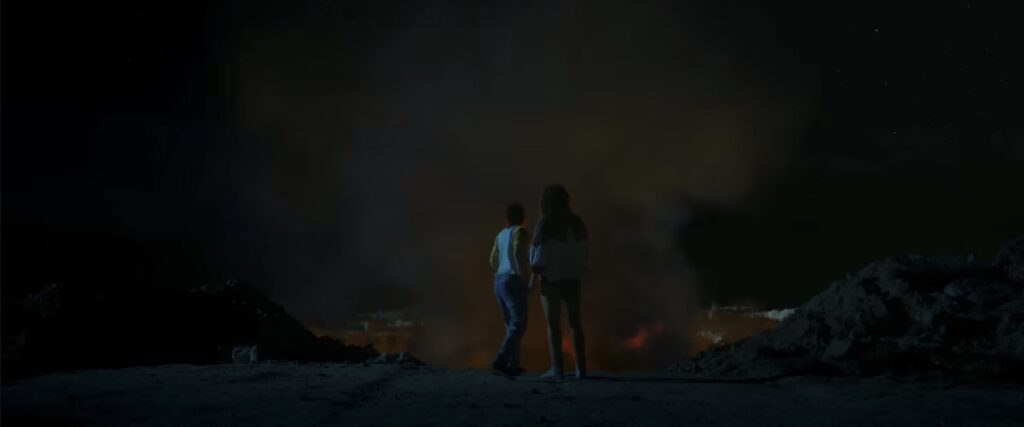
So no — Love Lies Bleeding is not a movie I’m going to champion for its moral vision. This is genuine film noir — a genre about worlds that are corrupt beyond saving, and about antiheroes who can’t succeed without compromising their integrity. In this world of two Lous, misogynistic violence is so prevalent and brutal that we can empathize with these disintegrating women who cannot escape without doing deadly damage themselves. They turn to violence in desperation, as it’s the only path they can find that offers them a measure of tenderness. They sink into delusion as reality proves too cruel to bear.
But the bigger question is this: Who can blame them? Who can deny that their circumstances are tragic? Their choices are destructive, but their options are awful. They’ve never known love to be something generous, patient, gentle, or forgiving. They live in a world of snarling beasts, and while they may not find their way to true freedom, at least they’re finding a fundamental love language. They’re lurching in the right direction — through a world both absurdly fantastical and frightfully, believably like our own.
The spirit of '80s Tim Burton is alive in Lisa Frankenstein
An early draft of this review was originally published on February 17, 2024,
at Give Me Some Light on Substack, months before it appeared here.
Subscribe, and you'll read many of these reviews while the films are still breaking news!
What a perfect conduit for the talents of REO Speedwagon.
Forgive me — I try to avoid co-opt lines from a movie’s dialogue for review purposes, but that one is just too fitting to pass up. Director Zelda Williams’ Lisa Frankenstein is, above all, an excuse to revel in some distinctly 1980s’ pop culture, from the needle drops (which are effective, and surprisingly eclectic) to the costumes (which raid the closets of Cyndi Lauper and Madonna), to the analog Edward Gorey-ish aesthetic of early Tim Burton.
With a whimsical if anticlimactic script by Diablo Cody — yes, the filmmaker who wrote Juno, Jennifer’s Body, Young Adult, and Tully — it’s a whole lot of frivolous fun as it plays, striking some charming notes that will remind you of Edward Scissorhands’ fairy tale fantasy, and more dissonant notes that recall Heathers. And it’s that rare comedy that knows exactly how long its silly little premise will last and then neatly wraps things up and lets us go home. Hard to believe that that is still possible.
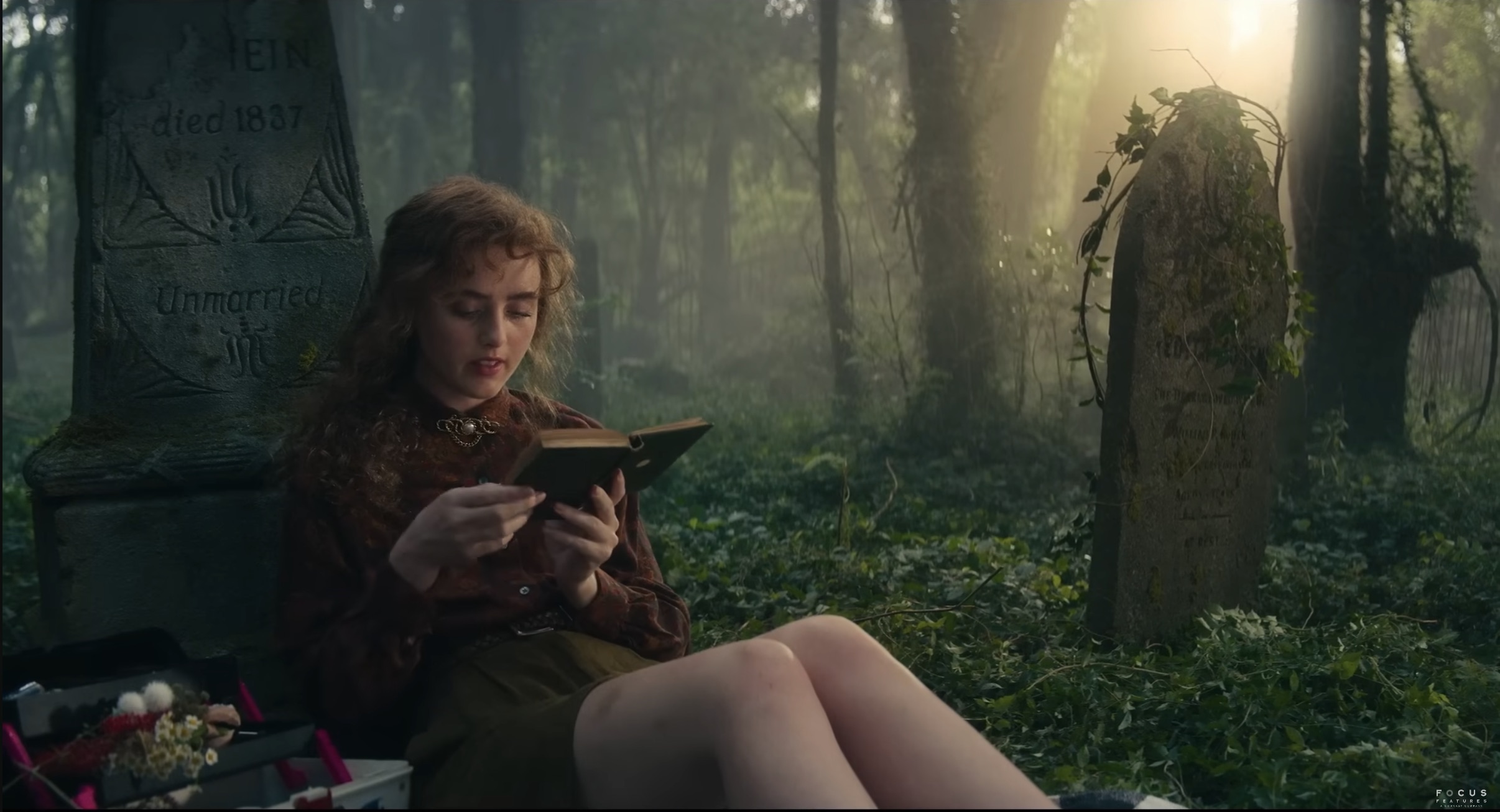
The pitch is so simple and sure to sell, it’s shocking we haven’t seen this movie before. The year is 1989 (I’m already sold, as that’s the year I graduated from high school), and Lisa (Kathryn Newton) is suffering serious PTSD from the horrific murder of her mother. Finishing high school in the home of her half-wit father (Joe Chrest), a jazzercizing Maleficent of a stepmother (Carla Gugino), and a cheerleading Heather-of-a-stepsister (Liza Soberano), she’s a class outcast for being out of step with the narrowly drawn “types” of students.
When one of those magical movie lightning storms jolts a corpse into Franken-animation, Lisa is somewhat distracted from her crush on the school literary journal editor by a tall, dark, and slimy stranger (Cole Sprouse). Hiding him in the closet like her teenage fantasy E.T., Lisa slowly discovers that she has a new secret weapon against anybody who might inconvenience her. After all, he’s willing to kill if he can score replacement body parts by doing so. (This zombie has higher priorities than brains). Over-the-top bloodshed ensues, all but guaranteeing that this will be a Halloween party favorite for decades to come.
It’s strange that Heathers seems to be the trending reference point for high school sex comedies right now. Bottoms is still fresh in our minds, right? But that film’s reckless audacity seems to be reminding a new generation of filmmakers of the value of surprise — even nasty, R-rated surprise.

While ‘80s sex comedies have never been a brand I’ve been eager to revisit, I liked Bottoms a lot, and I had a lot of fun with Lisa Frankenstein. I’m not fond of revenge stories, but there is something cathartic and truthful, something valuable in good-humored reminders that our sins will find us out — whether we be the sort who uphold the harmful cliques of adolescence or the uglier sort who commit sexual assault if they have the chance. Lisa is a victim of violent crime, and in her compromised state she is prone to endorse violent revenge if she can. I don’t applaud her methods, but I understand and empathize. Let this review be an endorsement of stories that warn against transgression, not a vote cast for violence.
The cast of Lisa Frankenstein, while unremarkable, is clearly having fun. The costuming is a joy. And it’s a delight to be reminded of how brightly movies like Tim Burton’s early work shone while we weren’t distracted by the turbulence their young stars suffered soon after. (I wonder what the late careers of Winona Ryder, Johnny Depp, and Christian Slater might look like today if they’d had wiser career mentors along the way.)
My enjoyment may have been influenced by a couple of unlikely factors unique to my screening:
First — the crowd, if you can call a dozen moviegoers a crowd. The young women in the almost-empty theater were screaming with laughter whenever Newton and Sprouse were alone on screen together. Diablo Cody has their number, let me tell you. I haven't heard so much girl-power solidarity in a theater since opening week of Barbie. I'm curious to see if word-of-mouth makes this thing a bigger hit than anybody saw coming.
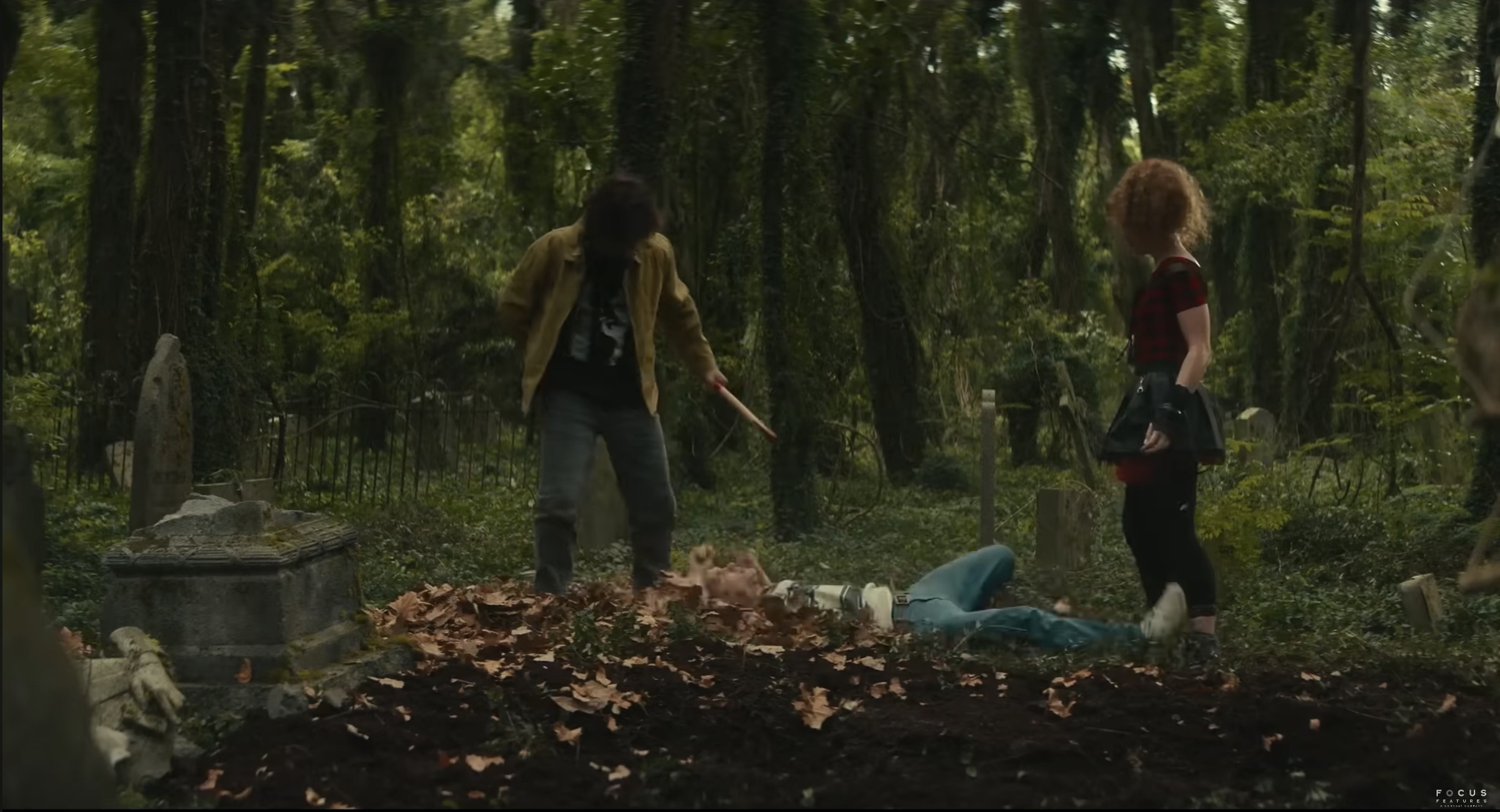
Second — the timing. I was wearing my headphones, with only one ear uncovered so I could track the movie. In the other ear, I was listening to the live broadcast of the Super Bowl's fourth quarter plus overtime. (Don’t judge me: No one else had reserved seats in the back-right quadrant of the theater, so nobody even noticed.) And you know what? I enjoyed both the game and the movie just fine.
While it’s a shame that none of the cast show the potential to become this generation’s Depp, Ryder, or Slater, or look poised for long-running careers like most of the cast in the retro-80s Stranger Things, the whole thing feels like joyous cosplay. Lisa Frankenstein may not be much more than a flimsy tribute to the days of Beetlejuice and She’s So Unusual, but that’s enough to make my late-80s high schooler heart happy for a fleeting 101 minutes.
What They Said:
Alissa Wilkinson at The New York Times:
Perhaps you spent the late 1980s and early ’90s doing something other than being a school-age girl. So it’s worth noting that the title of the film is a nod to a company, named for its founder, that produced brightly colored stickers with characters like unicorns and kittens and bears that eventually made their way to the broader school supply set. (In grade school circa 1992, my friends and I yearned for Lisa Frank Trapper Keepers, the true marker of cool.)
I was a little bummed out to discover that, despite the title, the nostalgic brand never really shows up in the movie — in fact, the vibe isn’t Lisa Frank-esque at all. But it’s OK, because “Lisa Frankenstein” is girly-gothy, in a way that’s a lot of fun once you get used to it. In fact, the best thing about the film is its production design, which takes familiar trappings from movies of the era (I thought of everything from “Poltergeist” to “Edward Scissorhands” to “Pretty in Pink” to “Weird Science,” itself a loose “Frankenstein” adaptation) and just dials up the color temperature a few degrees. It’s a pastiche crossed with a tribute, complete with references to slasher films, Cinderella, loner high school flicks and a makeover montage. Plus, of course, “Frankenstein.”
Kevin McLenithan at Letterboxd:
Lisa Frankenstein is mostly interested in asking what it would be like if Frankenstein’s monster wore a Violent Femmes t-shirt and had to learn what a vibrator is.
Adam Driver plays a driver — again! — in Michael Mann's Ferrari
An early draft of this review was originally published on December 31, 2023,
at Give Me Some Light on Substack, months before it appeared here.
Subscribe, and you'll read many of these reviews while the films are still breaking news!
Few events on the movie calendar pique my interest like a new feature from Michael Mann. His films Heat (1995) and The Insider (1999) are among my all-time favorites, both of them powerful examples that style is substance. Mann remains uniquely focused on men who are obsessed with excellence in particular pursuits, and how each man’s obsession draws him into moral compromises that become his Achilles’ heel. His interest in the women who love these men, and the prices they pay for loving unreliable, obsessive geniuses? That varies from movie to movie.

I felt some trepidation approaching this film. His feature films since 2006’s feature Colin Farrell/Jamie Foxx revival of Miami Vice has seemed less than inspired, almost like he was becoming more and more interested in the technical aspects of filmmaking and less and less interested in compelling, contemplative storytelling. 2009’s Public Enemies was engaging but unsatisfying, and Blackhat felt like B-grade Mann without any interesting variations.
https://youtu.be/8oOVNMjM1Jk?si=f7aP_0LISk4OXc_i
What would Ferrari, a passion project he has been talking about for decades, be like? Would it feel like a sort of culmination to the master’s career, a symphonic peak of his distinct stylistic priorities and his thematic explorations?
The movie is here, and now we know. The answer is… “Not really.”
Ferrari is well worth seeing for Mann’s reliably stylish work, for viscerally thrilling races, for a couple of strong performances, for a startling supporting turn from a snow-white-haired Patrick Dempsey, and for a troubling tale of ethical compromise and consequences. At the same time, I’m not sure Mann is going far enough. It’s all too easy to come away seduced by the dazzle of the brand and the giant who drives it, despite the lies, the recklessness, and the arrogance on display.
Adam Driver plays Enzo Ferrari — a very tall American 40-year-old playing a stout Italian 60-something — during a short span of days in which he risks the survival of his world-renowned company by driving (sorry!) his race car drivers to win a highly competitive race in sleek, red, innovative new sports cars. As he gambles it all for victory, he tries to manage the increasing suspicions and dissatisfaction of his wife Laura (Penelope Cruz) as they continue to grieve the death of their only son, while also trying to sustain secrecy about a lover, Lina Lardy (Shailene Woodley), and their secret child Piero (Giuseppe Festinese).

Clearly, there’s no shortage of trouble and tension, several stressful strands for Mann to twist into knots. Ferrari, which runs almost two and a half hours, flies by as Enzo zigzags from ruling over his drivers to arguing with his financial advisors to clashing with Laura to trying to reassure Lina and Piero. He tries to project calm and control, but those furrows in his brow deepen as if they might fracture his head. We can sense that his panic is not unlike that expressed by Adam Sandler’s Howard Ratner in the Safdie Brothers’ Uncut Gems.
The highlight of the film is, of course, the racing, which is even more thrilling in speed, sight, and sound than the fighter-jet sequences of Top Gun: Maverick. Every time one of those Ferrari race cars revs its engine, and the whole theater resonates, I think about how it sounds like the motors are growling "Ferr-AR-i, Ferr-ARRRR-i."
But I admit some discontent with the excitement I find in these races. It’s a corrupt industry, one that plays fast and loose with human lives, and it represents a quest for glory that is compromised to the core. Yes, there is beauty in the art of designing the perfect automobile, and nobility in testing the limits of what we imagine humans are capable of. But at what cost? Are these endeavors overseen by someone who cares about his employees? Or is he throwing their lives out onto the racetrack like dice, playing the odds in the hopes of advancing his family name?

And, in the film’s preachiest aspect — a lesson hammered home in the trailer — Enzo insists that two objects cannot share the same space at the same time. He’s talking about racing of course, but in his love life and in fatherhood he is challenging that very law. And there will be a grievous price for more than just himself to pay.
Teaching everyone an inevitable lesson, Ferrari gives us the worst car accident I have ever seen on a big screen. I'm not sure that's anything for Mann to brag about, but there it is. I'd heard buzz about a bad onscreen accident, so I was bracing for it. I didn't know the historical account or what to expect. I was not prepared. I physically recoiled and did not recover (even though the movie seemed to think we could all move on and get back to worrying about how Enzo was going to resolve his extramarital affair).
Meanwhile, Mann’s own gambles pay off fairly well here — chief among them being the casting of Driver. He’s too tall, yes. He’s too young, sure. His Italian accent is unpersuasive. And yet — this is a film full of extreme closeups, and Driver’s face is a perfect canvas for the conflict, the ferocity, and the seeming incomprehension of just how severely is tempting disaster. He commands our attention whenever he’s onscreen.

(And while we're on the subject: Paterson, Ferrari ... What will be the next movie in which Driver plays a driver in a vehicle-focused movie? And what kind of transportation will he conquer next?)
The "terrible joy" speech — the highlight of his performance and the ideal Oscar clip from this film — is such a concise expression of one of the foundational questions of Michael Mann's filmography: Why are so many men driven (sorry) to sell their souls to achieve such shallow and worldly definitions of "success"? How are they able to rationalize and ultimately harden their hearts regarding the devastation they unleash on people around them? It's a great callback to Heat.
Some have speculated that maybe this is a sort of self-portrait, that Ferrari's drive is similar to Mann's own drive. That doesn't quite work for me: I don't see Mann's artistry leaving casualties in its wake. The film faces up to Ferrari's depravity in ways that make me think Mann is a much wiser and more conscientious human being.

But having said that, I am still somewhat uncomfortable with this film. As vividly as it portrays the harm done by Ferrari's arrogance and irresponsibility, I still think that audiences will come away even more enamored of the brand, and that some will likely come away thinking of Enzo as some kind of hero. (As Ryland Walker Knight posted on Letterboxd, "The spectacle of capitalism argument doesn’t add up in an estate sanctioned hagiography with a family business end card.") Even though the film shocks us and sickens us with the bloody cost of “the game,” it is quick to redirect our attention from casualties treated as collateral damage to refocus us quickly on Enzo’s domestic drama.
Worse, Enzo’s an exemplar of the worst kind of masculinity — his word isn’t worth anything, he treats women as necessary complications, and his ego is his compass. (His mother is no help with any of this; she only values a woman who can provide her son with an heir.) Mann doesn’t directly condone Ferrari’s faults, but where does he leave this narrative? Are moviegoers more likely to come away reverent toward the brand that has given them such visceral, glamorous thrills? Or will they be sobered by the kind of hard-hearted arrogance that forged this corporation’s prestige?
Is my concern really about the movie? Or just the lack of discernment in so many moviegoers? I’m not exactly sure.

But I’m having second thoughts about one of my earlier claims. I’m going to take back my claim that Driver “commands” our attention in every scene. In making such a claim, I’m disrespecting Penelope Cruz, who reminds us that she is the supreme talent in this film, an actress at the peak of her powers, turning what is typically a thankless role (the jealous wife) into a memorable storm of strategic countermeasures. If I see Ferrari again — and I’m not sure I can stomach that car accident again — I’ll watch it above all for her. Here we have what may be a first in all of Mann’s filmography: a film about obsessive men in which a woman steals the show.
Still shaking from that glorious, exhilarating restoration of Stop Making Sense, I have to say that Ferrari ranks as only the second-best film I saw in 2023 about a thin man wearing a massive suit. And I have no trouble saying that, committing himself to creative collaboration and excellence that lifts people up instead of exalting himself, David Byrne wore it better.
Teyana Taylor deserved an Oscar nomination for A Thousand and One
An early draft of this review was originally published on December 21, 2023,
at Give Me Some Light on Substack, months before it appeared here.
Subscribe, and you'll read many of these reviews while the films are still breaking news!
I thought a lot about Barry Jenkins’s Oscar-winning feature Moonlight as I watched A.V. Rockwell’s A Thousand and One.
Both films are about how the odds are stacked against young Black boys in America, especially if they start in poverty or without the ever-presence of vigilant, resourceful parents. Both are about how the care of loving, faithful grownups can make all the difference.
And, fortunately, they’re both powerful and memorable stories.

Still, much that made Moonlight engaging — the poetic imagery, the sumptuously colorful cinematography, the score — feels lacking to me here. The world according to Rockwell here is convincing in its hard and jagged realism, often dwelling in a cold, grim color scheme that immerses us effectively in a bleak world. But I found myself hungry for some visual poetry.
On the other hand, one of Moonlight’s most interesting challenges — the casting of three different actors to play young Chiron enduring trials of childhood, adolescence, and adulthood — works better for me in A Thousand and One. Here, three actors portray young Terry, who struggles with the hardships of poverty and school, while the longsuffering and passionate Inez keeps a firm maternal grip on his arm. I was distracted by Moonlight’s jarring shifts from one actor playing Chiron to the next; they seemed so strikingly different from one another. Here, I believed each chapter: Aaron Kingsley Adetola (playing Terry at 6), Aven Courtney (Terry at 13), and Josiah Cross (Terry at 17) work together almost seamlessly to create the illusion of a young boy defying the odds to become a young man with a promising future. I believe in Terry as a three-dimensional character, trying to trust Inez as she fights to save him from so many traps that doom so many black children in poverty, abandonment, and, eventually, addiction. I find Terry more compelling than Chiron primarily because he’s allowed to be so much more than a victim, more than just a figure for us to feel sorry for.

In fact, every performance in the film feels just right, making this film's time-jumping narrative seem authentic at every turn. And the main event, as critics are declaring with almost unanimous enthusiasm, is the performance of Teyana Taylor as Inez. (A prediction I don't want to make: Teyana Taylor's name will be missing from the Oscar nominations, and that's going to be hard to take.)
Taylor commands our attention every time she’s onscreen, covering the film’s substantial span of years from 1994 to 2005, a short history heavily accented with details about what New York’s mayors claimed about their city and what was really happening on the streets.
As we watch Inez assert influence in Terry’s life, steer him toward success in school, and struggle with the risks, rewards, and costs of coaching her boyfriend into becoming the father figure that Terry needs, the actors and the film’s dilapidated textures of the film’s mise-en-scène create an absorbing drama in an entirely believable world.
Until, alas, the narrative’s startling final turn. In the last act, Rockwell's cinematic imagination gambles on a revelation that is meant to astonish us and break our hearts. And perhaps it will work for you. It does not work for me—not because I find the twist implausible. (On the contrary, I find it very easy to believe.)

No, the problem is that the film has not felt like a typical crowd-pleaser drama, or like a movie rigged to win Oscars… until suddenly it does, with late-breaking surprises that come to us in heavy-handed dialogue. A Thousand and One has done a decent job of showing instead of merely telling until that point. I just wish the last chapter could have been revealed more imaginatively, more cinematically, in ways that allowed us to participate and connect certain dots ourselves.
You know how cheated you feel when a TV detective in a poorly written murder mystery reveals the big Whodunnit and HowTheyDunnit, and you're like, "Well, we didn't have most of that information, so what have we been doing here all this time?"
I feel a little like that at the end of this thing.

Still, that’s the only complaint I have about a movie that I still wholeheartedly recommend.
A Thousand and One casts a meaningful spell. It takes us on a journey with characters we won’t forget. And it tunes our attention in such a way that we will look a little differently at our own city streets. We will listen a little differently when it comes to news about the extra resources that Black Americans need in order to break out of cycles of poverty that are not, and have never been, their fault.
Kore-eda's Monster keeps us guessing
An early draft of this review was originally published on December 21, 2023,
at Give Me Some Light on Substack, months before it appeared here.
Subscribe, and you'll read many of these reviews while the films are still breaking news!
You've heard this line: "Be kind, for everyone you meet is fighting a hard battle."
Typically, if you Google those words, you discover they've been attributed to all kinds of wise writers, including Plato. (Most probably, they first came from the author and minister Ian Maclaren.) Whatever the truth might be, I'd argue that, going forward, those words should be linked to a download of filmmaker Hirokazu Kore-eda's Monster, which is one of the most absorbing dramatizations of that wisdom I can think of. Every single character in this movie is fighting a hard battle, and very few of them ever learn what their neighbors’ battles are really about.
For the last 30 minutes of this film, I was increasingly worried that the tangle of tragic storylines would be resolved in some far-too-convenient way, something that would feel contrived and disappointing.

Just so you know — that doesn’t happen. Not at all. The way it does resolve may have you wishing, after the fact, that they had contrived some easier, more satisfying resolution. This is a heartbreaker in so many ways, and it will leave you with just as many questions as answers.
Kore-eda is doing some of the best work of his impressive career here, reminding us that he may be the world’s best director of child actors. His youngest actors here are every bit as affecting as the adults, delivering delicate and nuanced performances.
He did this most effectively in 2004’s Nobody Knows, a film that often replays in my mind two decades later for the harrowing emotional ordeal the audience experiences watching a family of young children try to survive their mother’s sudden disappearance. In 2018, as Bong Joon-ho’s Parasite was earning global accolades and setting a tremendous precedent for international cinema at the Oscars, Shoplifters was quietly moving audiences to tears and, for me, standing out as an even more affecting work about a family scheming their way to survival at the poverty line. Let’s not talk about The Truth, his first venture outside of South Korean storytelling, which starred Juliette Binoche, Ethan Hawke, and Katherine Deneuve—an intriguing misfire. He came right back with Broker, and my heart melted all over again.

Monster is more challenging than any of them, in that it shows us the same central events several times from different characters’ points of view, and the spans of timeline covered in each point of view varies, leaving us scrambling to figure out how the stories line up.
We first follow the story of a widowed mother, Saori (Sakura Ando), as she tries to figure out whether or not her grieving son Minato (Soya Kurokawa) is telling the truth about being bullied by his fifth-grade teacher Mr. Hori (Eita Nagayama). She is achingly sincere and devoted to her son’s well-being. But what do you do if the school administration seems uncooperative, even though your boy has come home bleeding and claiming that he’s been told that his human brain was replaced with a pig’s brain? Both Ando and Kurokawa are win our hearts, if not our heads, right away.

Then, we get the story again, this time from the point of view of Mr. Hori. And very quickly it becomes apparent that things are much more complicated than we thought. Hori is socially awkward, his body language unsettling, and it is rumored that he’s been a customer at a local “hostess bar,” which goes up in flames in the film’s opening moments. Is Hori innocent of his students’ accusations of abuse? Did he draw blood? Are we going to have to choose sides in this dispute?
Hold on — there is still so much more to learn: from the point of view of the school principal (Yuko Tanaka), who is still shaking from a trauma that left her with excruciating secrets; and from the point of view of Yori (Hinata Hiiragi), a preternaturally resilient and cheerful boy who is a magnet for bullying by his classmates and his abusive father.
If that doesn’t sound like enough drama for one movie — and it should be — just wait. There’s a natural disaster coming.
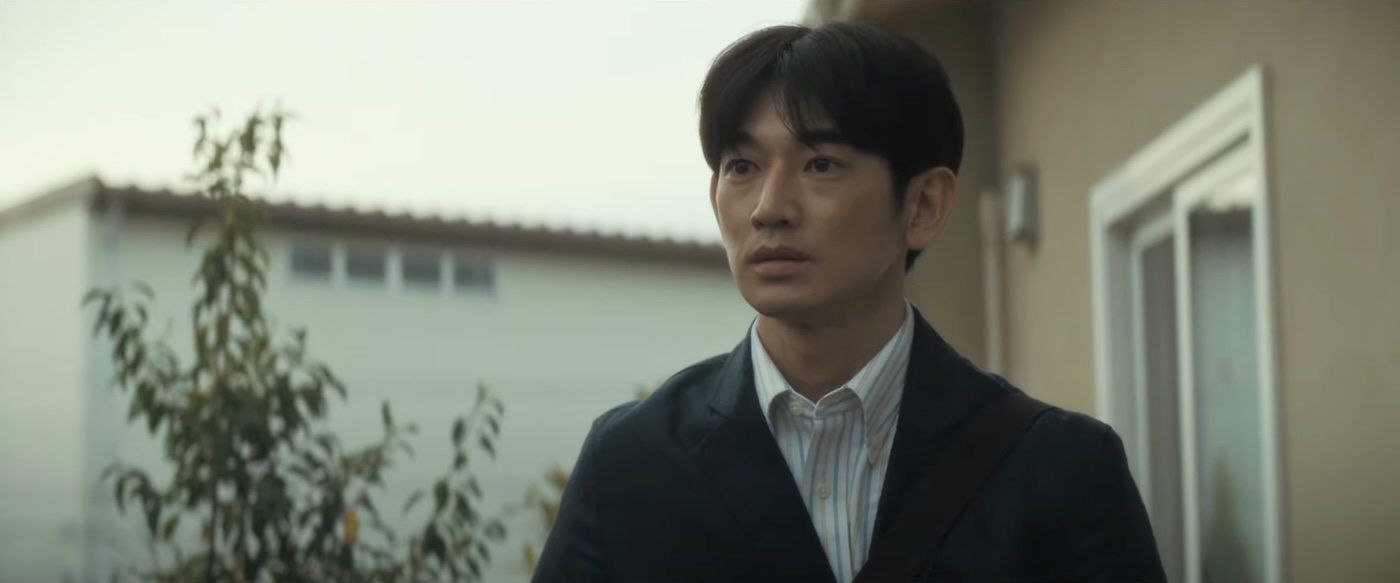
If I were reading this review, I would be skeptical that this will add up to an unbearably contrived and melodramatic film. And maybe that will be your experience. I see that some of my favorite critics find it too convoluted, too frustrating, and too intent on moving us with shocking twists. One even compared it to the notoriously lurid web of storylines in Paul Haggis’s Crash!
I don’t know — it worked for me. In Crash, everything felt like it came with a hashtag of a hot-button social issue. I suppose you could pin social-commentary hashtags on these storylines too. (I won’t say which ones, as that would involve heavy spoilers.) But I believe in these characters; I’m moved by these performances; and as I find myself frequently horrified at how complicated dramas at the school where I teach are oversimplified by those who aren’t getting what they want, I feel deeply invested in each character’s struggle to cope with hardship and their crucial need to see a bigger picture.

I care about Saori’s maternal anguish and moved by her dedication to her son. I’m unsettled by the plausibility of Mr. Hori’s Kafka-esque nightmare. And I can hardly fathom the principal’s private heartache. But the movie’s most compelling storytelling comes in its attentiveness to these two young boys, Minato and Yori, who are being forced to grow up too quickly, who are dealing with so much loss at home, and who now have to face violence within their school and further injustice stemming from ignorance of the adults who, while they’re earnestly seeking to help, have missed too many essential details to understand the nature of the children’s suffering.
Here's to Kore-eda, the master of filmmaking about children. I don't know that any of his films since Nobody Knows twenty years ago have inspired in me such deep empathy for the children we see onscreen, which has the meaningful effect of strengthening my curiosity and attentiveness to young people around me.
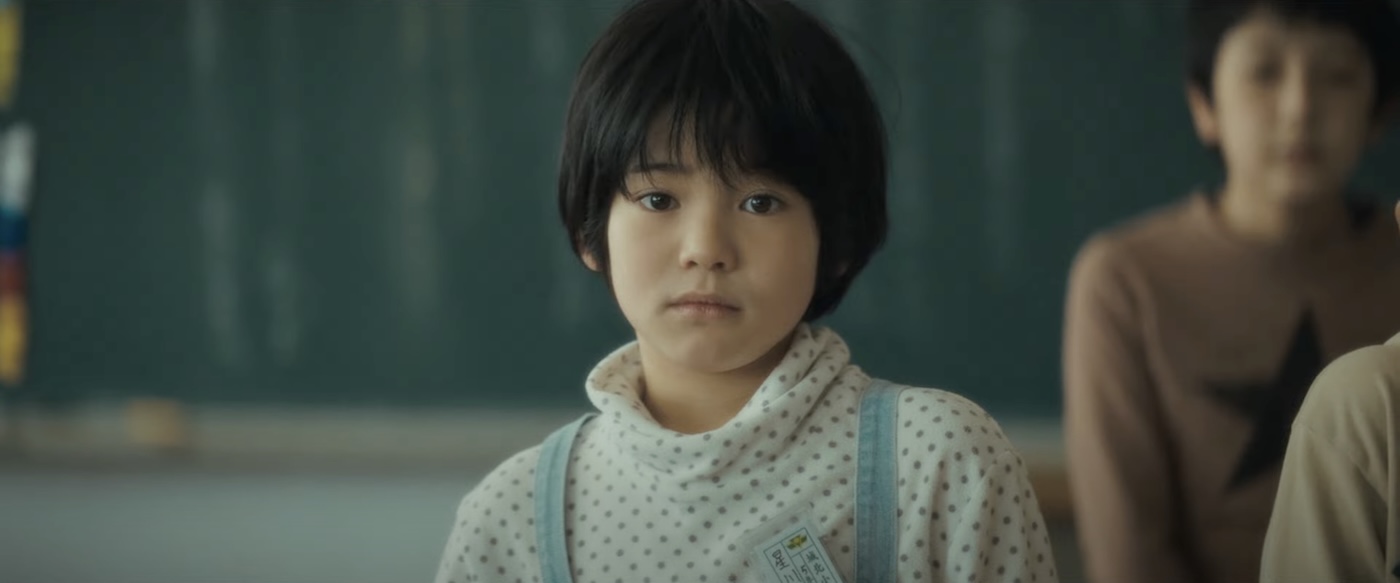
As a matter of fact, when the movie began I was already greatly aggravated by the ongoing commentary of two young boys who were sitting behind me, to say nothing of the constant sound effects of their vigorous snacking. What were they doing here, by themselves, plowing through bags full of snacks and talking about their friends and their phones at a movie that will not typically show up on the radar of boys their age?
But as the film continued, and I became more absorbed by its braided dramas, I simultaneously found my aggravation dissolving and turning into curiosity. Could it be that I started caring?
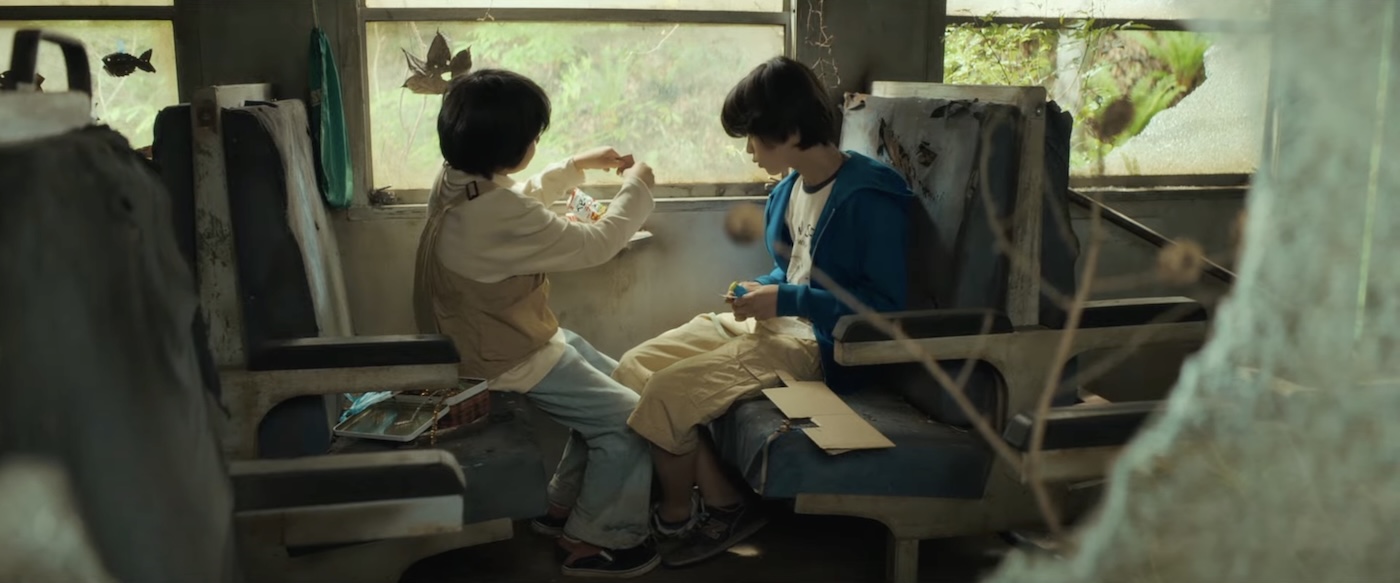
Later, when the film took a stronger interest in the secret lives of the boys onscreen, I heard a few stray comments from the boys sitting behind me. One of them asked his friend why in the world he’d chosen this movie. The other said he’d read about it somewhere, and that he thought it was based on a true story. (I haven’t found any evidence of that, but the plausibility of the plot’s conundrums has much to do with why the film is compelling.) This sharpened my curiosity, and the more I listened to their interactions, the more I became convinced that one of them had very strong, very personal reasons for his attraction to this film. I can’t say more without revealing plot spoilers. Suffice it to say that this is a film about secrets that seem too scary to reveal, and when we feel lonely in the burdens we carry, we will be drawn to stories about others in similar circumstances. Art can help us bear heavy hardships by comforting us with, at the very least, a sense that we are not alone.
And while I’m still wrestling with some questions about how Monster’s storylines intersect, and where exactly each character has ended up by the end, I’m going to be thinking about their heartaches for years to come. I’m going to think of it whenever I’m meeting with a student whose sufferings I cannot decipher, and whose future seems to be largely in the hands of the adults who have to make decisions for them largely on guesswork. And I’m going to be thinking about the two boys who sat behind me in the theater, and the fact that at least one of them felt so personally invested in the film. I’m going to wonder if the two of them are still friends, if their friendship has what it takes to survive the challenges they will have to navigate.
